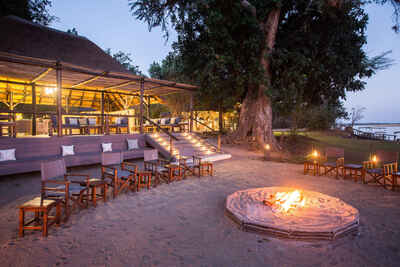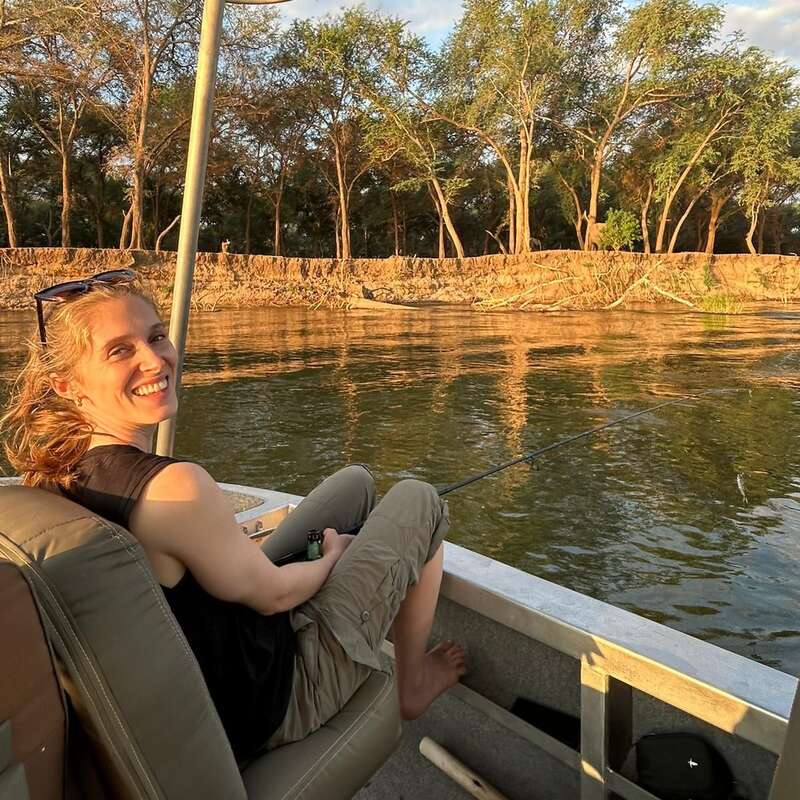About Chiawa Camp
Viewed from a star bed, or over a leisurely riverboat lunch, the Zambezi takes centre stage at Chiawa.
It's a truly special setting for this family-run safari lodge, where attention to detail underpins every aspect of a stay.
Start with the sturdy tents, each with a private river outlook that greets you on waking – and accompanies an afternoon wallow in your sunken bath. Comfort is the watchword here, but there’s no sense of bling – this is understated luxury.
Take in the view from the hub of the camp, too, whose traditional style is a backdrop for a cool drink, relaxing with a book from the library, or star-gazing courtesy of the telescope on the upper storey.
And never far away is the wildlife, for which the Lower Zambezi is famed. From hippos at home in the river to elephants spotted from the viewing platform or any number of animals passing in front of the hides, you scarcely have to leave camp.
But when you do, whether on land or on the river, you’ll be accompanied by guides whose expertise ranges from canoeing to walking safaris, fishing to game drives.
The pool is cool and welcoming, the food is good, the service exceptional. This is a magical corner of Zambia enhanced by an excellent camp.
Our view
In many ways, we think Chiawa is one of the best, and best-run, camps in Zambia. The service and food are top-notch, with a team who tend to go out of their way to make everyone feel comfortable – and have consistently left us feeling that nothing was too much trouble. The camp manages to be luxurious, while still feeling homely and welcoming, a balance that can be difficult to get right. A good complement of excellent guides and a flexible attitude towards activities means that guests will usually get to do what they want, more or less when they want. We love it.
Accommodation
8 tents, 1 suite
Children
Best for 12+
Open
01 May to 21 November
Activities

4WD Safari

Birdwatching

Boat trip

Canoeing

Fishing

Guided walking safari

Night drive

Sleeping under the stars
Traveller reviews of Chiawa Camp
94 real, un-edited reviews from Expert Africa's travellers.
Arrived 17 May 2025, 4 nights
"Chiawa Camp review"
Overall rating: Excellent
Arrived 18 Sep 2024, 3 nights
"Chiawa Camp review"
Overall rating: Excellent
Arrived 15 Sep 2024, 4 nights
"Chiawa Camp review"
Overall rating: Good
Arrived 22 Aug 2024, 5 nights
"Chiawa Camp review"
Overall rating: Excellent
Arrived 19 Jun 2024, 3 nights
"Chiawa Camp review"
Overall rating: Excellent
Arrived 4 Nov 2023, 3 nights
"Luxury in the Bush at Chiawa "
Overall rating: Excellent
Arrived 2 Nov 2023, 3 nights
"Chiawa Camp review"
Overall rating: Excellent
Arrived 6 Oct 2023, 5 nights
"Chiawa Camp review"
Overall rating: Excellent
Arrived 31 Aug 2023, 5 nights
"Better than excellent!!!"
Overall rating: Excellent
Arrived 14 Jul 2023, 4 nights
"Chiawa Camp review"
Overall rating: Excellent
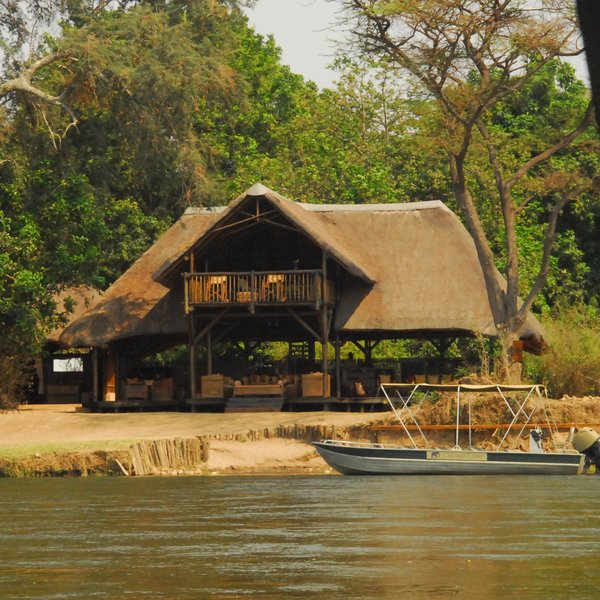
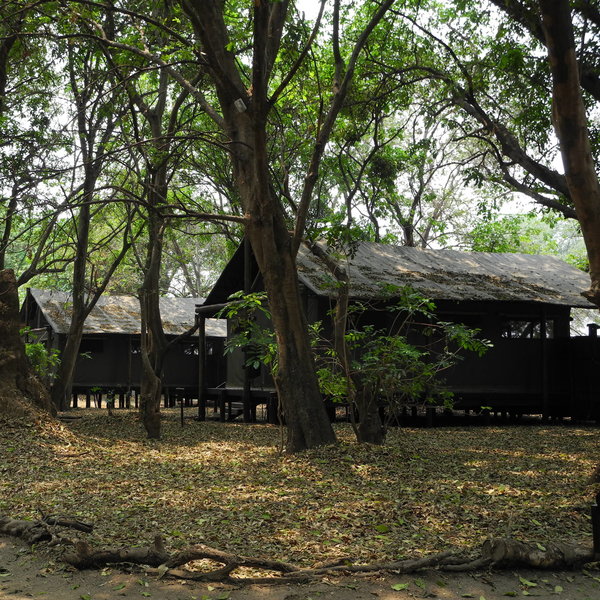
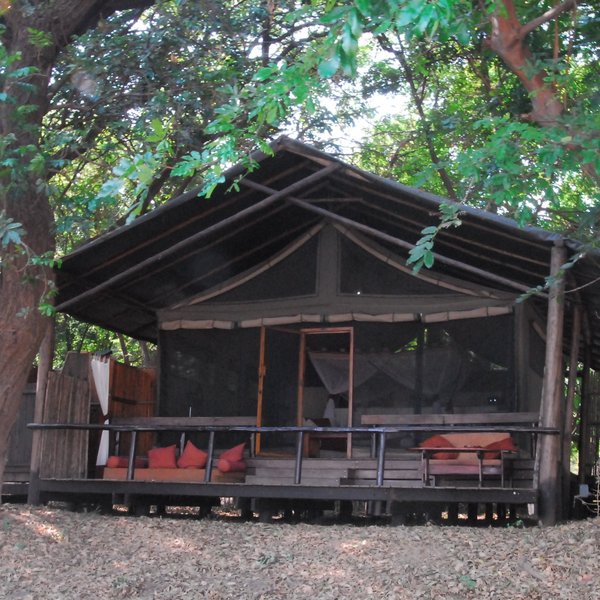
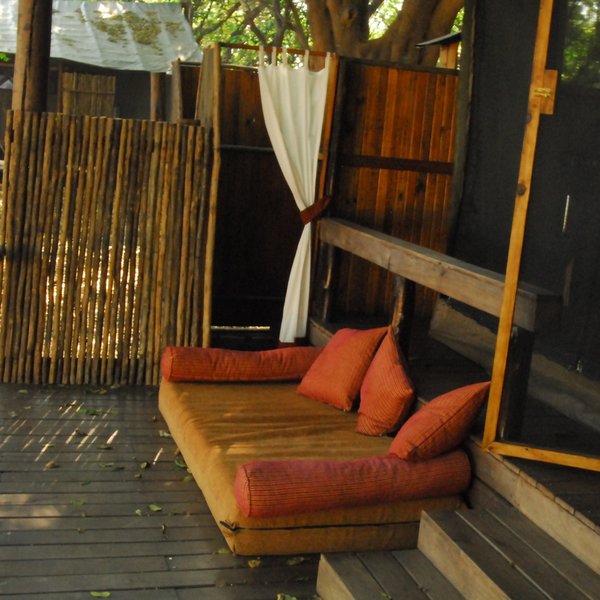
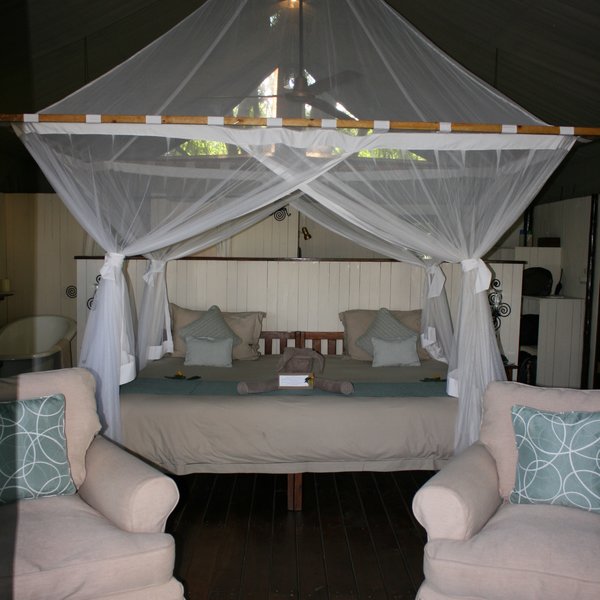
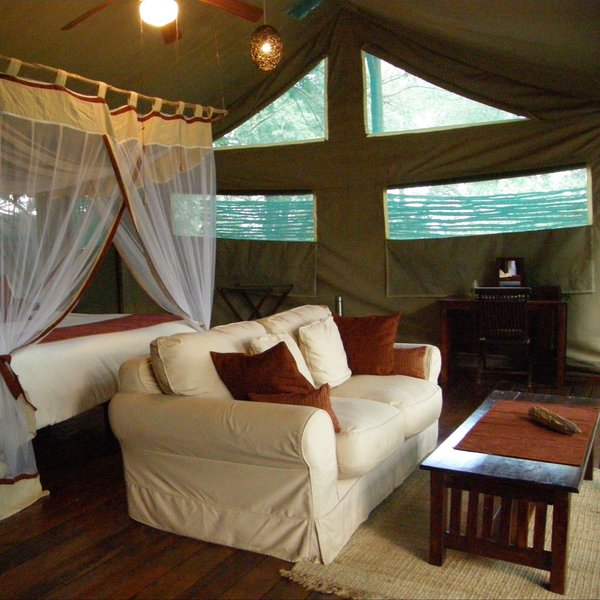
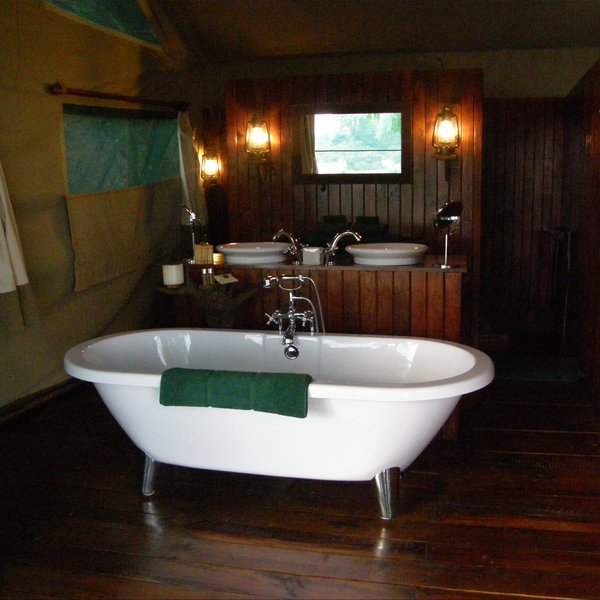
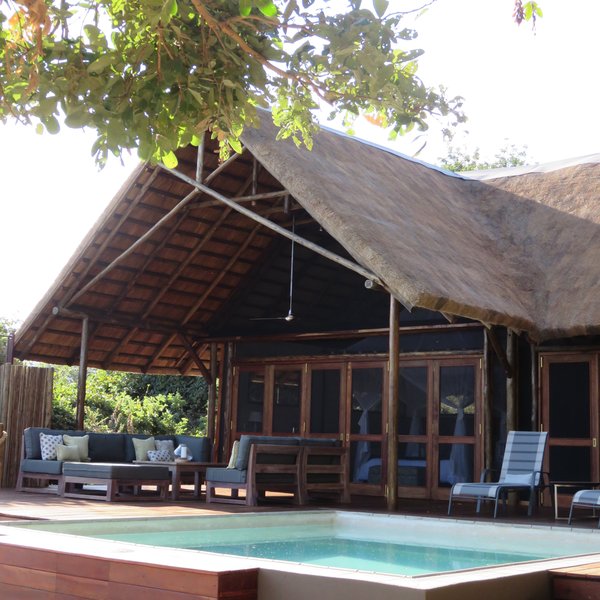
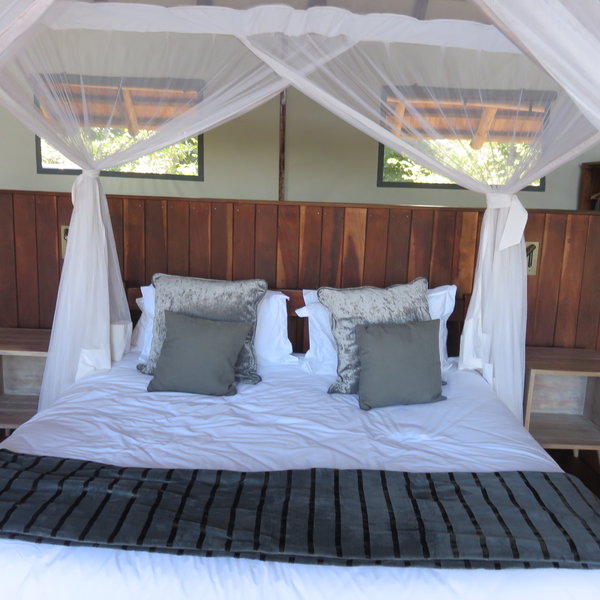
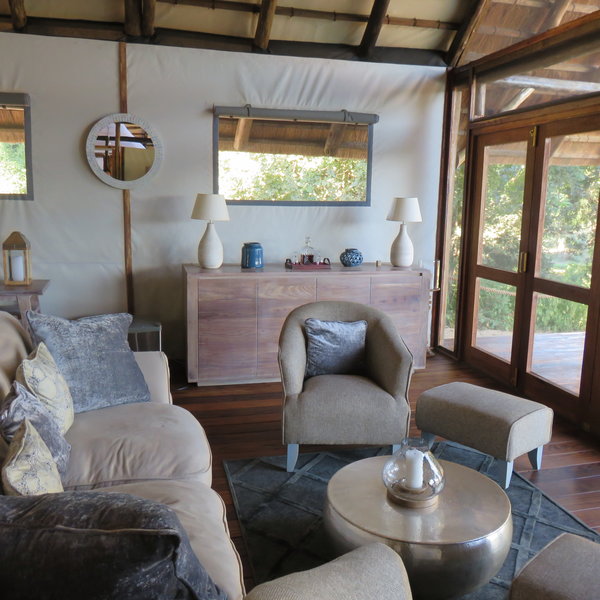
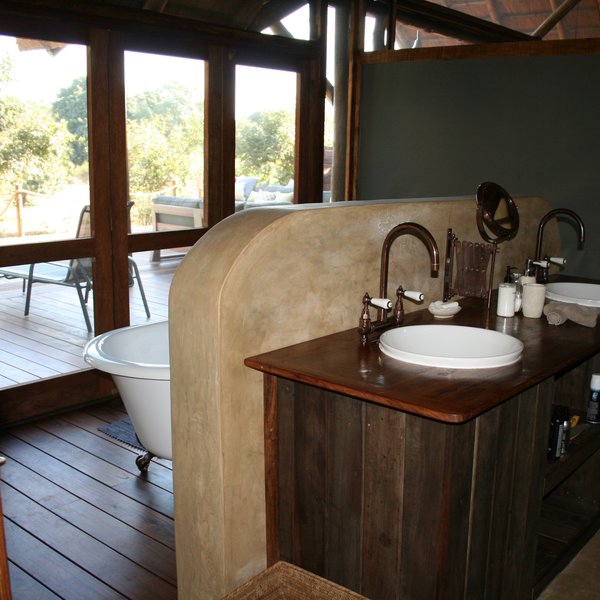
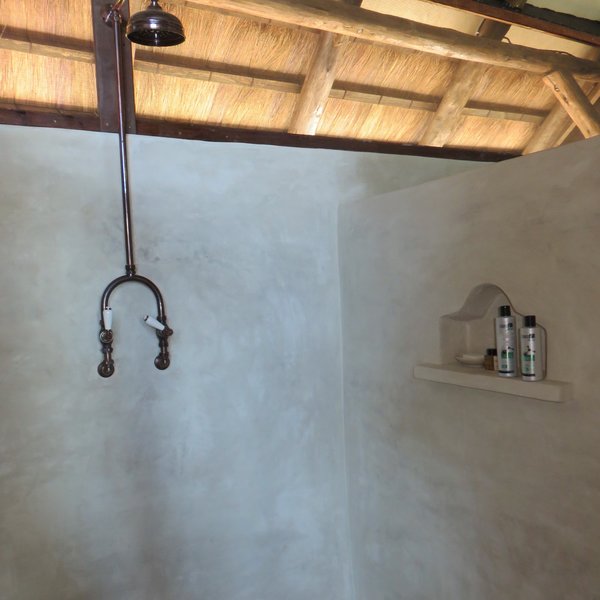
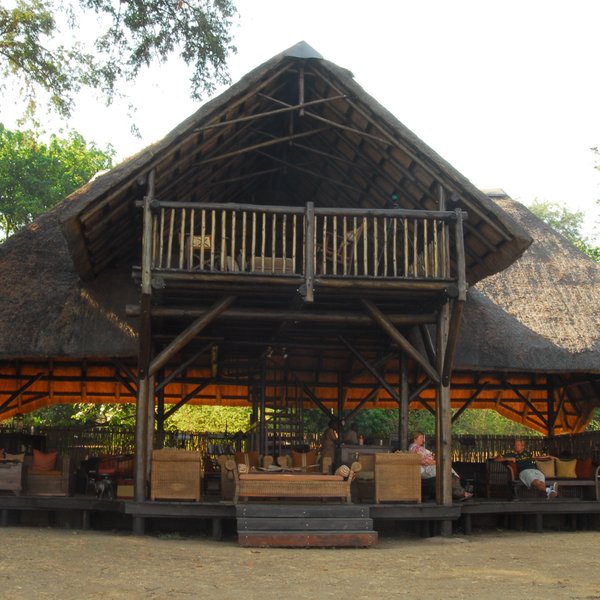
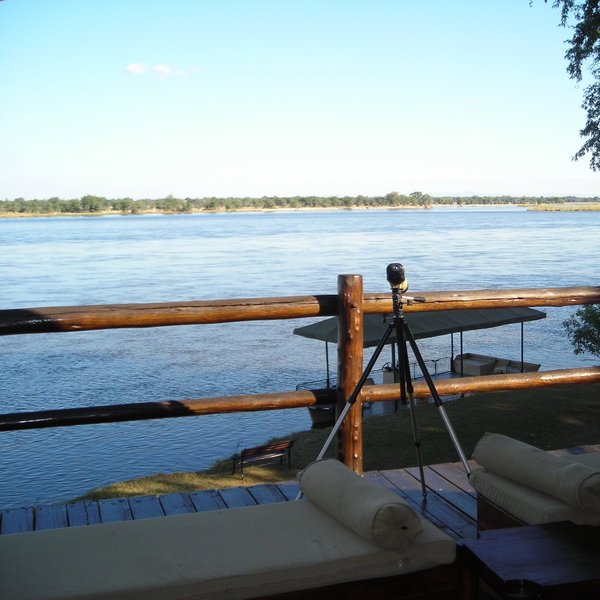
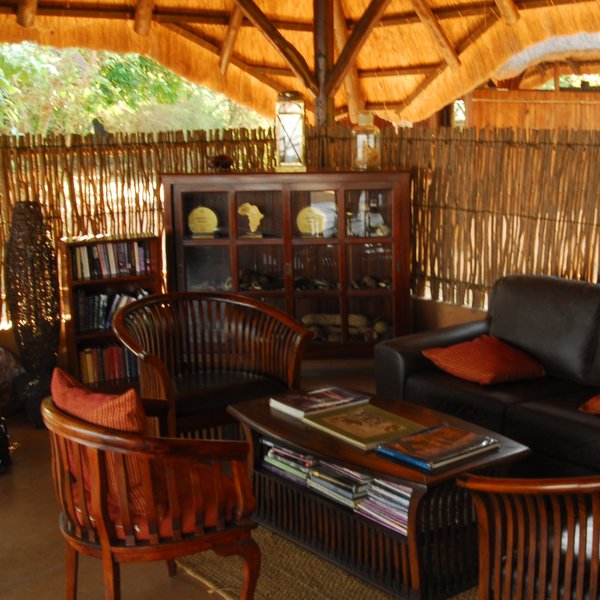
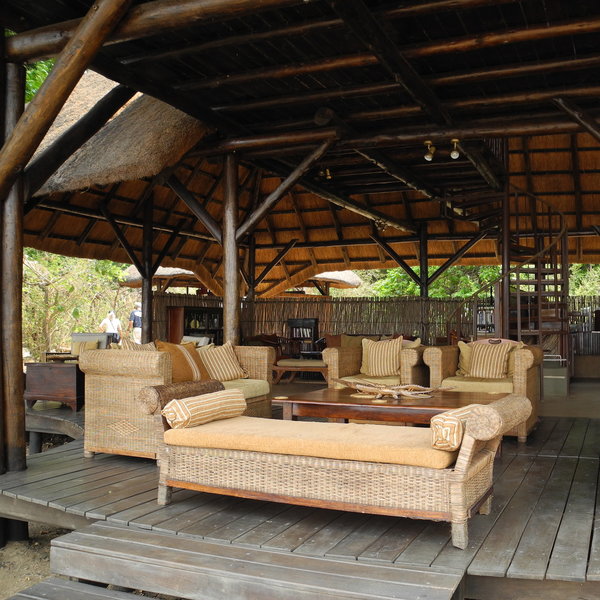
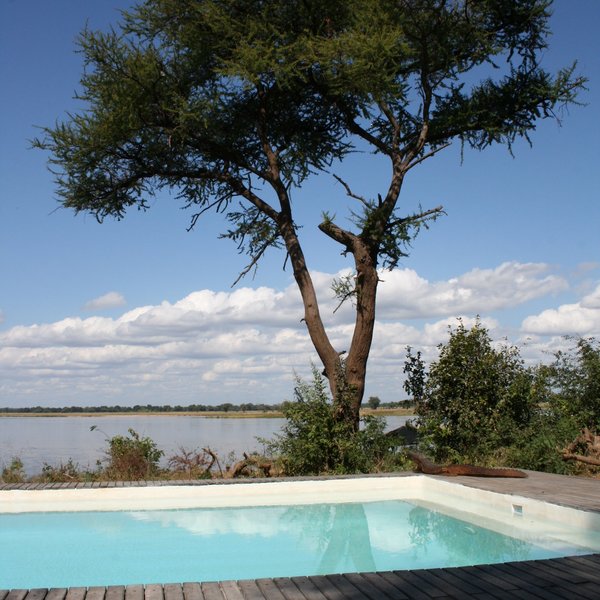
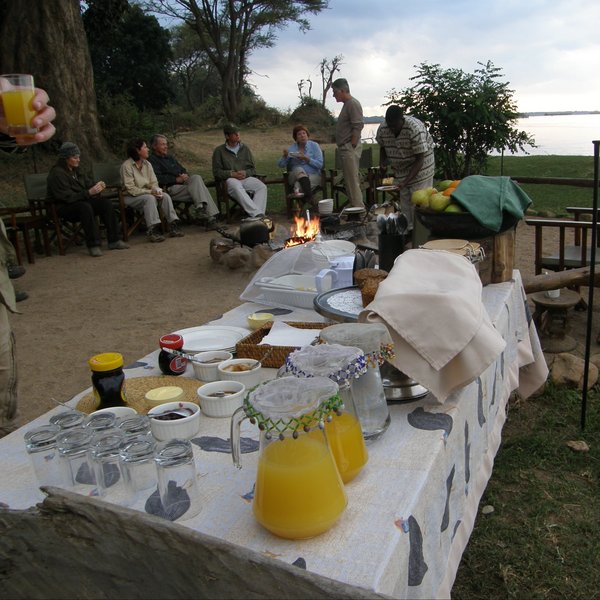
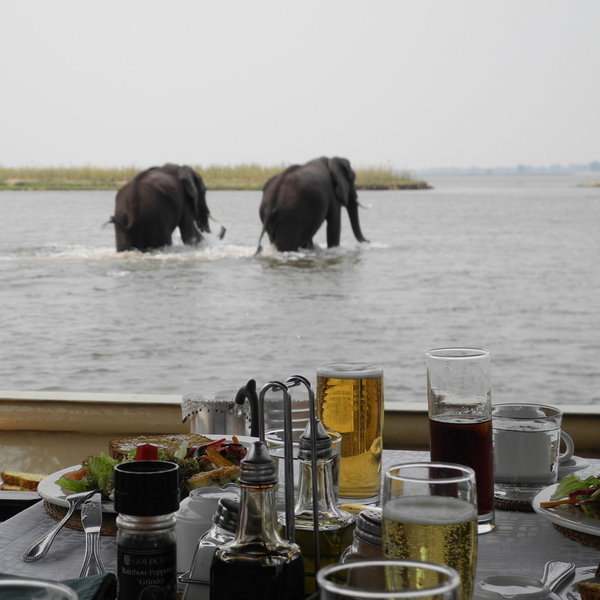
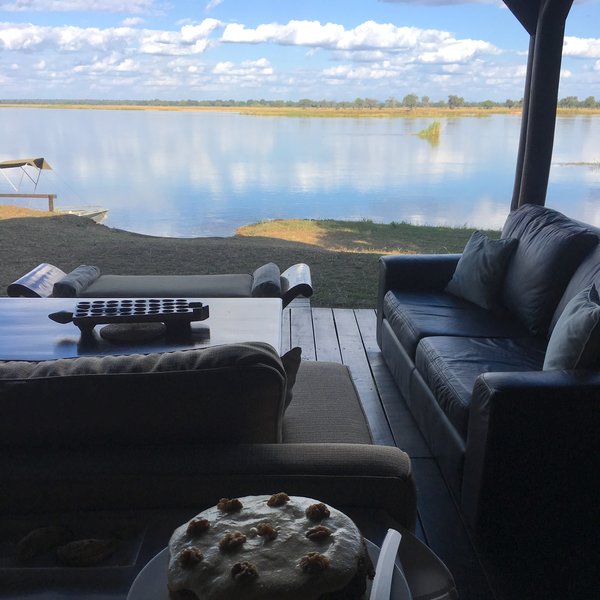
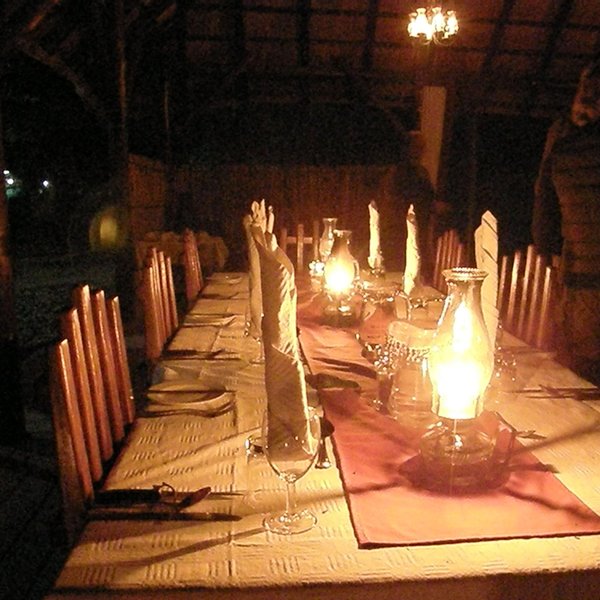
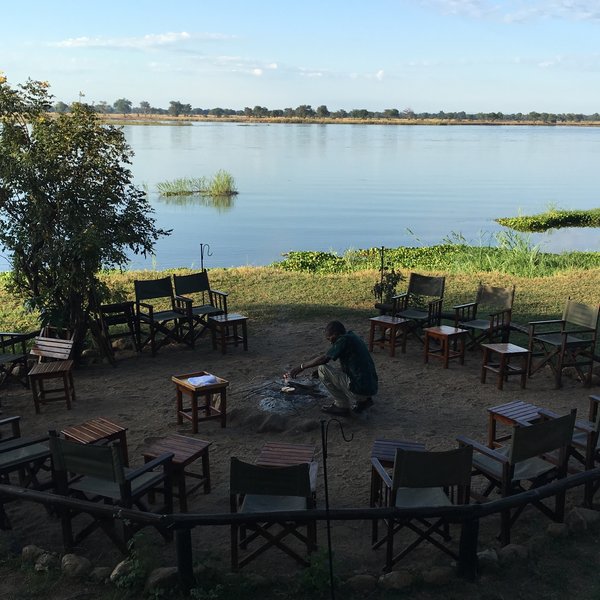
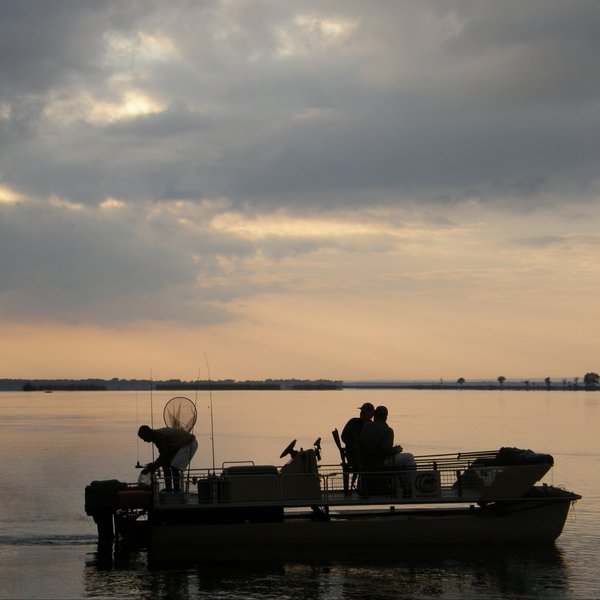
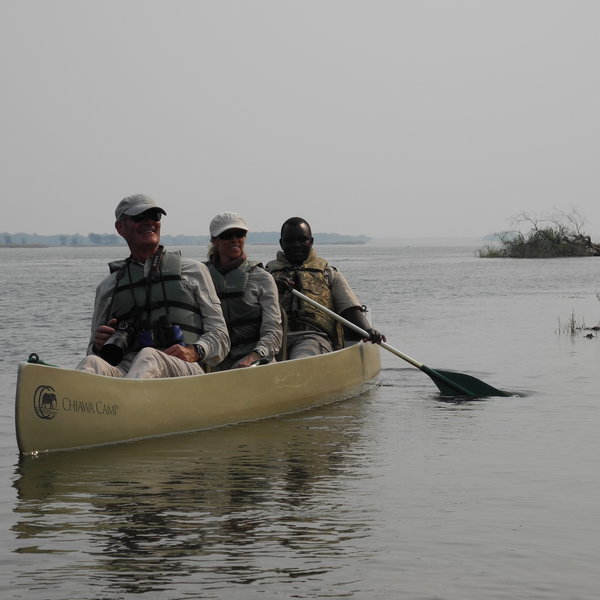
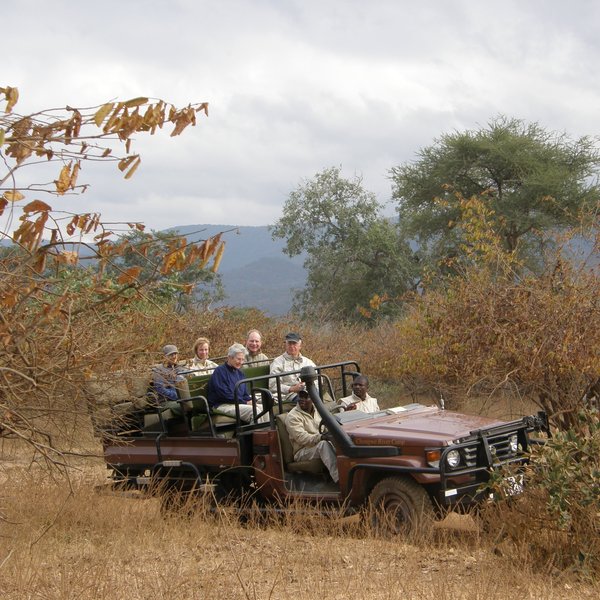
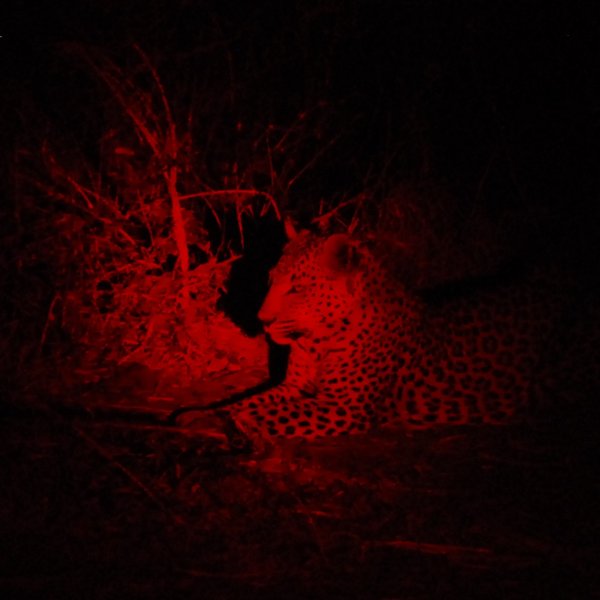
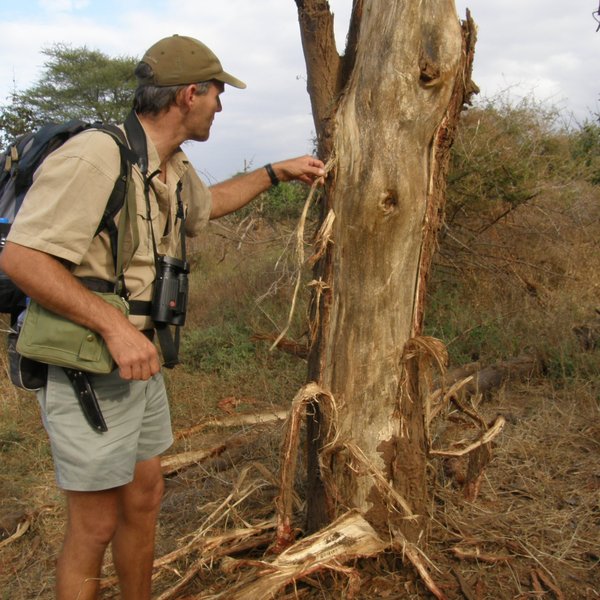
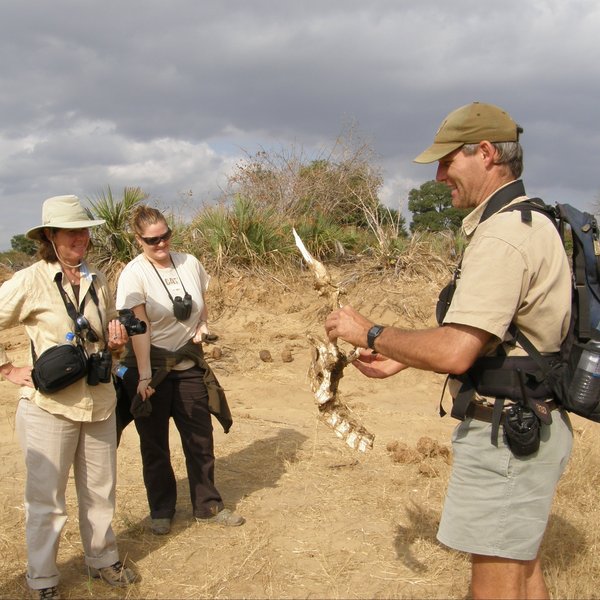
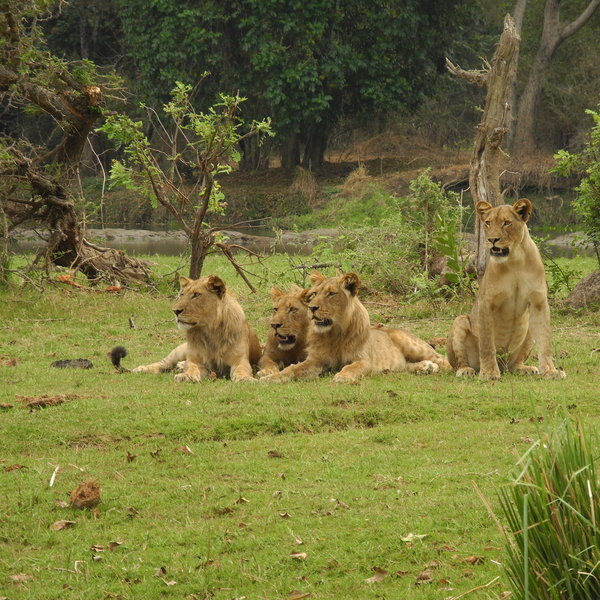
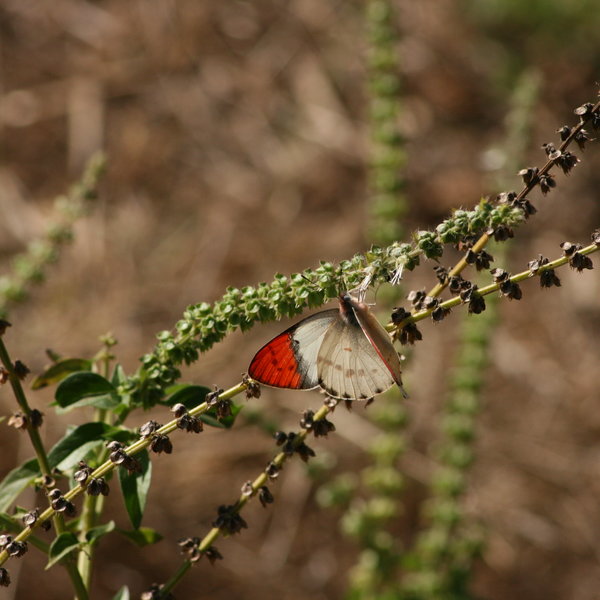
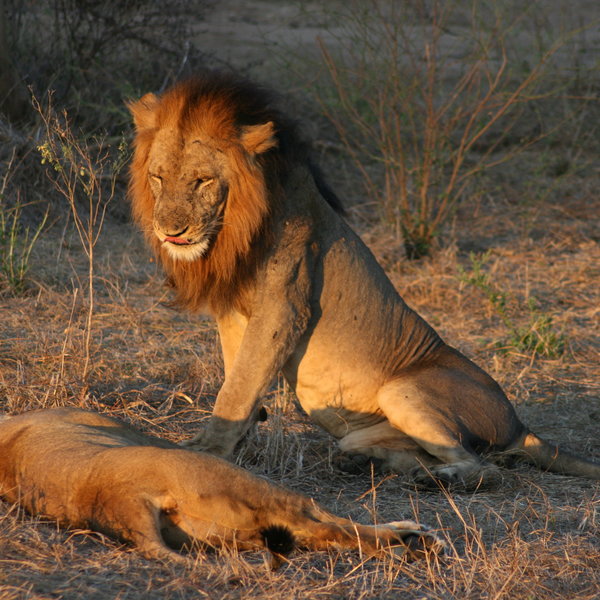
Expert Africa's gallery
When we travel we take lots of photos ourselves to give you a real and un-edited view of the safaris. See our 109 pictures and 1 videos of Chiawa Camp to get the candid view.
View gallerySafaris visiting Chiawa Camp
Just ideas, we'll always tailor-make a trip for you
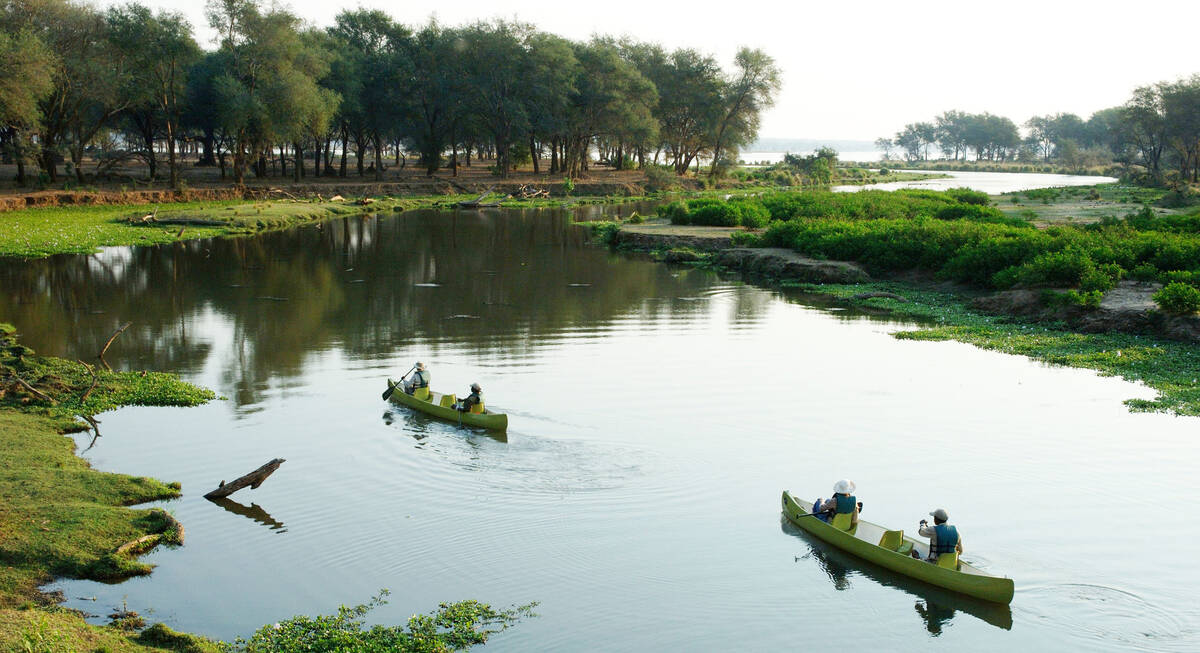
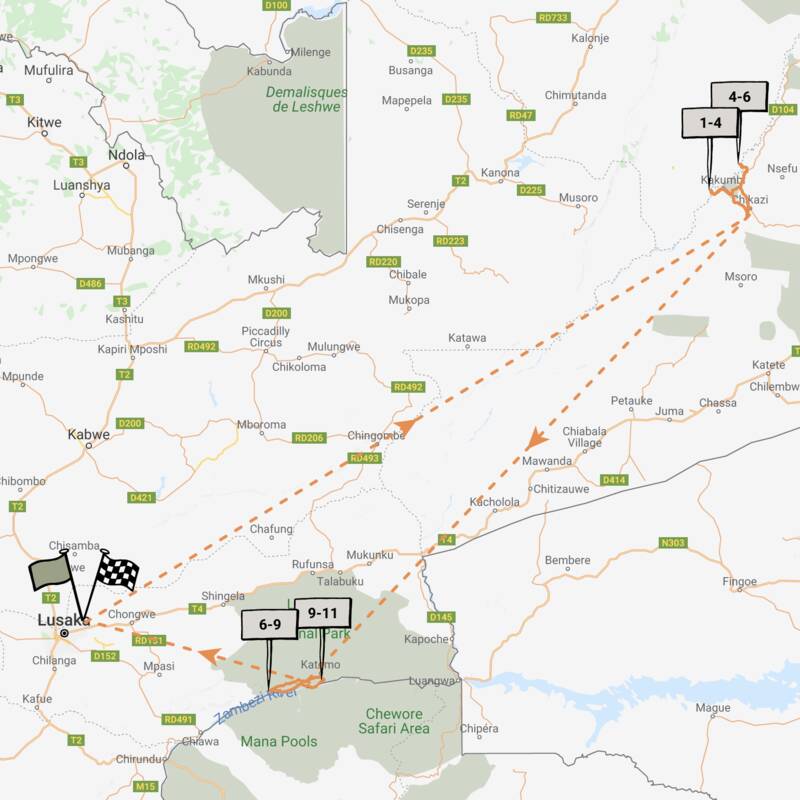
Crawshay's Zebra Safari
10 days • 4 locations • 1 country
LUSAKA AIRPORT TO LUSAKA AIRPORT
This superb safari combines two of Zambia’s best national parks, the South Luangwa and the Lower Zambezi. The camps are small and high quality with excellent safari guides.
Visiting Lower Zambezi, South Luangwa
US$10,460 - US$13,820 per person
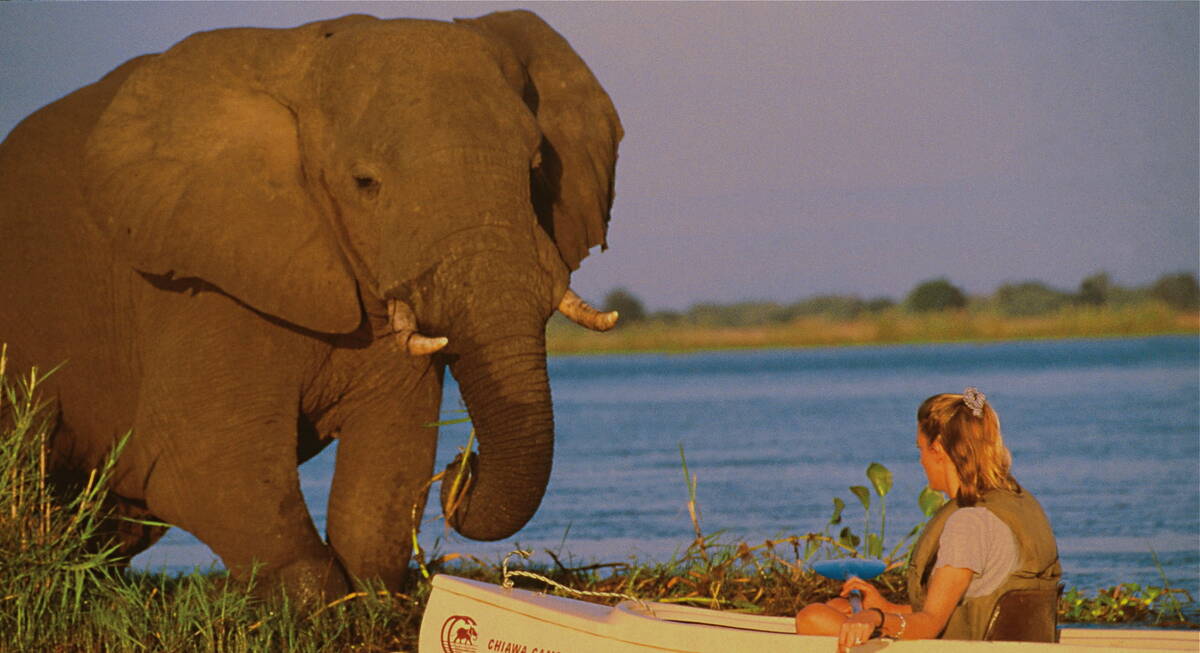
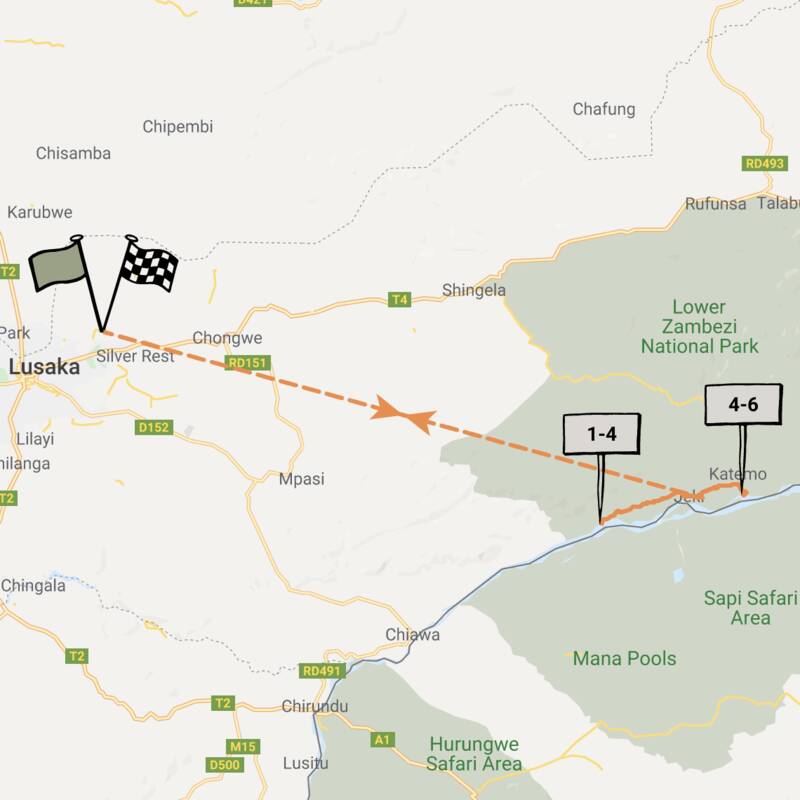
Slender Mongoose Safari
5 days • 2 locations • 1 country
LUSAKA AIRPORT TO LUSAKA AIRPORT
A detailed exploration of Lower Zambezi from two top-notch sister camps, each in a prime location in the national park. Expect a high level of care, first-class guiding and superb wildlife.
Visiting Lower Zambezi
US$6,580 - US$8,400 per person
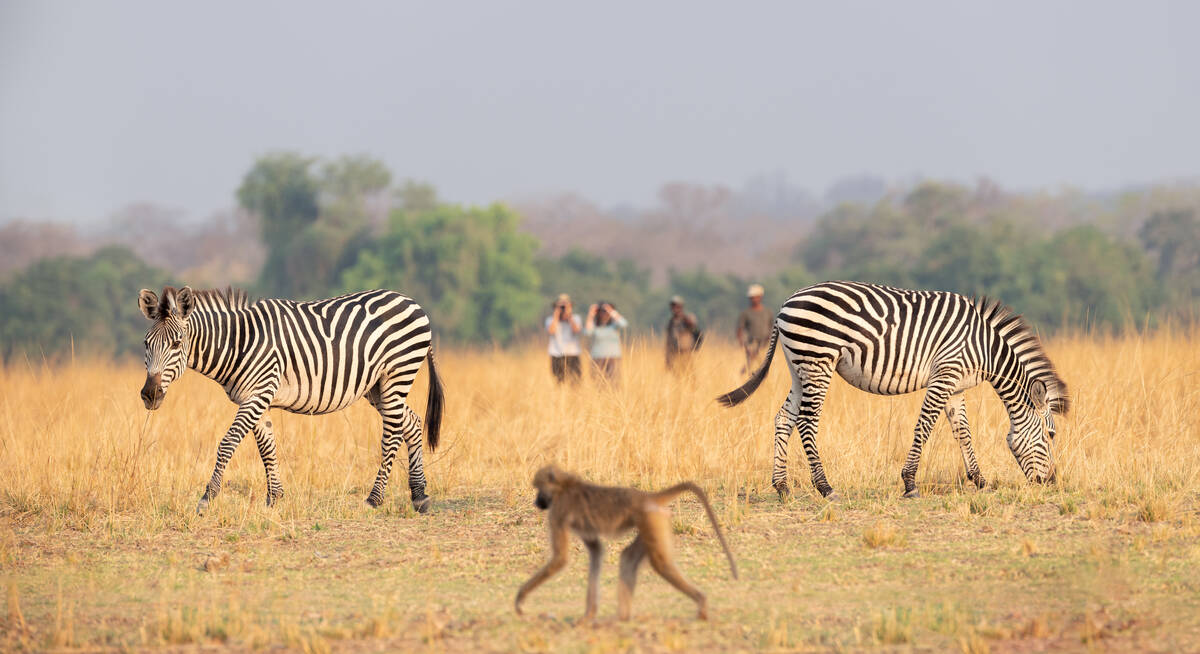
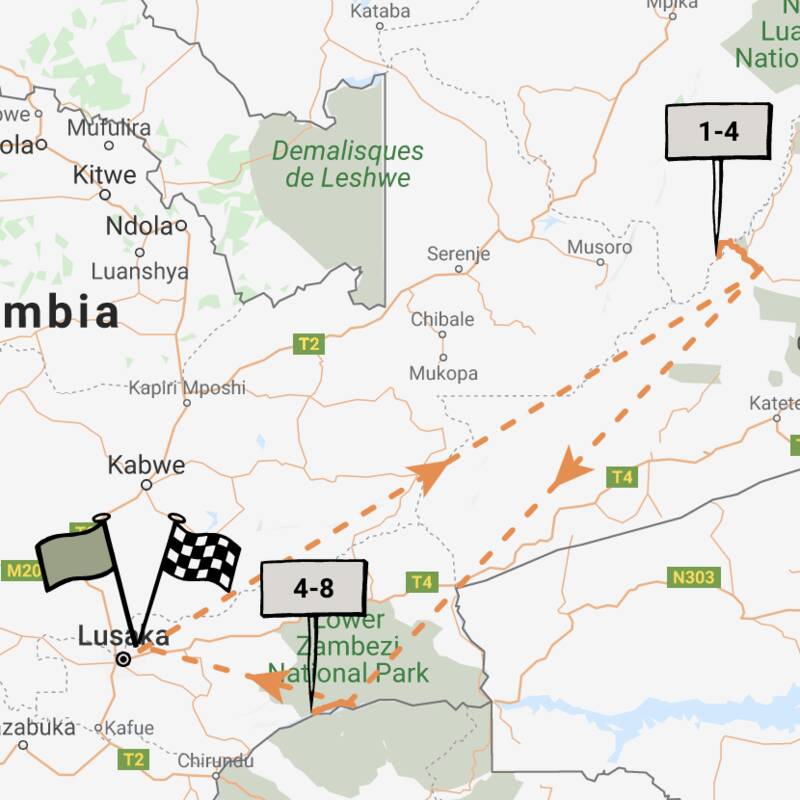
Vervet Monkey Safari
7 days • 2 locations • 1 country
LUSAKA AIRPORT TO LUSAKA AIRPORT
Explore the world-class wildlife of Zambia’s South Luangwa and Lower Zambezi national parks in considerable luxury, guided by experts from two sister camps renowned for their excellent level of care.
Visiting Lower Zambezi, South Luangwa
US$8,780 - US$10,990 per person
Chiawa Camp: Our full report
On the banks of the Zambezi River, Chiawa Camp sits beneath a grove of mahogany trees.
As the first camp in Zambia's wildlife-rich Lower Zambezi National Park, it was opened by the Cumings family in 1989, and is still run by Grant Cumings. Over the years, it has evolved in size and comfort to a high degree of understated luxury.
With its beautiful setting, long history and exceptionally high standards, Chiawa is one of our favourite camps in Zambia – especially when combined with its sister camp, Old Mondoro. As with most camps in the Lower Zambezi, it is open only during the drier months, between about mid-April and mid-November.
The camp has eight Meru-style tents and one larger safari suite, perfect for families or honeymooners. Linked to the main areas by sandy pathways, all are en suite and have broadly similar facilities, and all are beautifully furnished in wood and neutral colours, though some differ in terms of layout or outlook. The tents were remodelled in late 2020, keeping their previous locations but realigning them to optimise their views of the animals that wander past on the way to the river, and upgrading them in terms of space and style.
- Six tents (numbers 1–6) overlook the main Zambezi River and are closest to the main area. Each of these tents is raised on a wooden platform, large and sturdy, and is entered by a proper door. Large mesh windows and a sliding mesh door fitted into the canvas wall open out onto a private veranda with comfortable lounge chairs and a coffee table. Inside, they are spacious and open plan, incorporating a bedroom, bathroom and changing area.
High canvas ceilings give the tents a spacious, airy feel. A large walk-in mosquito-net canopy envelops the twin beds, or a double, together with bedside tables and lights, and a ceiling fan above the bed.
To one side, cooled by ceiling and free-standing fans, you'll find a wooden writing desk and two armchairs, while behind the bed is a changing area.
The bathroom, set behind a three-quarter wall, features a rain shower and flush toilet in a separate cubicle, twin sinks set into a wooden counter, and a free-standing claw-foot bath with a view. A private outdoor shower completes the picture. Along with the seating areas, the deck also has a small sunken “wallow”: built-in cushioned seating around a sunken bath, which can be filled with water on request in which to cool off or simply rest your feet. - The remaining two tents (7 and 8) have similar facilities to the rest, but these are a little bigger and with their bathrooms to the side of the open-plan bedroom and lounge area, rather than behind it. Because they catch the afternoon sun, these also have thatched roofs for extra shade. Tent no 7 overlooks both the Zambezi and the Chowe rivers, whilst no 8 overlooks the seasonal Chowe River.
- Chiawa's safari suite or honeymoon suite (though it works just as well for families), is different again. Opened in 2017 beside the Chowe River, it combines an understated but elegant design with a hilltop location towards the far end of the camp, affording it both privacy and views out to the Zambezi. With a thatched roof, canvas walls and folding wooden and gauze doors stretching the width of the suite, it's a spacious, luxurious and comfortable retreat. Although it can be hotter here in the summer months, as this more sheltered location gets little breeze, the amount of wildlife that passes through this section of the camp makes it a worthwhile compromise.
Overlooking the river and running the width of the suite is a wooden deck, where comfy daybeds, chairs and sunloungers sit alongside a private plunge pool and, to one side, an open-air shower. Steps lead down to a firepit and another seating area.
Inside, the suite is decorated in light cream, jade and silver colours, which complement the light-wood furnishings. A large lounge area has sofas, a coffee table and a small reference library, as well as a minibar and tea/coffee station. This space, with a guest cloakroom, can be converted into a second bedroom with two daybeds.
Dominating the bedroom is a huge four-poster bed within a walk-in mosquito net. Bedside tables have stylish reading lamps, and on a practical note there are luggage shelves and storage units, holding a torch, emergency radio, mosquito repellent and a small safe.
In the middle of the suite, between the lounge and bedroom areas, the open-plan bathroom features a free-standing bath (surrounded by candles), twin sinks and a second shower and toilet in separate cubicles. As with all of Chiawa's tents, there are complimentary toiletries, dressing gowns and slippers.
The food at Chiawa is usually excellent. Most meals are taken in the separate dining area, which is open to the front and overlooks the river, but lunch is a movable feast, perhaps under the shade of the trees or on Chiawa's motorised pontoon, and breakfast is set up around the campfire. In the dining room you'll also find a “help yourself” tea and coffee table, which is always stocked with freshly baked biscuits. Dinner is often by candlelight under the stars, and the team at Chiawa will often arrange private dinners away from camp in a section of dry riverbed, illuminated by candles and storm lanterns.
For those hot days on the Zambezi, Chiawa Camp has a large swimming pool, with a shaded area and sunloungers. And if you want to work off that extra cake from afternoon tea, you might also be tempted by the small gym area, with cardio equipment as well as weights and yoga mats! The camp also has a small shop, stocked with good-quality, locally made curios.
In the corner of the camp, Chiawa has an elevated viewing platform, overlooking the confluence of the Chowe and Zambezi rivers, so ideal for watching animals come down for their midday drink. There are also three hides, one just on the edge of the camp, next to the river, and a second sunk into the ground next to a waterhole, allowing an eye-level view of buffalo, warthogs and other thirsty animals.
New to Chiawa in 2023 is their Star Bed tower. Just downstream from the camp, it overlooks the Zambezi and an inlet known as Scout’s Hollow – a popular drinking spot for wildlife. By day, the base of the tower is a third photographic hide with seating for guests, and sandbags and rests for cameras.
By night, however the upper section of the four-metre tower comes into its own for a star-bed experience, with a queen-size bed beneath a black mosquito net, to enhance stargazing opportunities. The tower also has an open-plan bathroom, with a flush toilet, washbasin and bathtub. A red-filtered torch is provided to view any night-time creatures wandering past, and a two-way radio is on hand should you need to contact the Chiawa team.
Chiawa’s Star Drift experience, also new for 2023 and at extra cost, includes a a four-course dinner drifting along the river on the camp’s floating pontoon, followed by sparkling wine served at the Star Bed and a night there, with a continental breakfast served in the morning.
With a team of excellent and enthusiastic guides, Chiawa offers a full range of flexible activities, which include game drives (day and night) in open 4WDs, walking safaris, canoeing and boat trips, and catch-and-release fishing. Do be aware that at certain times of the year, if water levels are unusually low, some of the water-based activities may not be possible. The guides are professional and knowledgeable, and over numerous visits since our first in 1995, most recently in October 2022, we've come to appreciate their willingness to go out of their way to try to fulfill each guest's interests. Do note, however, that given the variety of safari activities, your guide may change depending on your chosen activity.
The game viewing in the Chiawa area has been superb over the years, too – so much so that it's not unusual for camps downriver or from just outside the park boundaries to head this way. On just one evening drive we spotted a variety of wildlife, from lion and leopard, to porcupine and chameleons. Don't expect giraffe or wildebeest, though, as they're not found in this area. Until early 2017, we'd have said that cheetah weren't to be found in the bush surrounding Chiawa either, but a lone male has been spotted several times since.
For the keen birdwatcher, the Lower Zambezi is great for both water and land birds, with nesting carmine bee-eaters quite a spectacle between September and November. Boating, canoeing and walking safaris give a different perspective and, if you're very quiet and cautious, may sometimes allow you to get close to the birds without disturbing them – our sightings have included giant eagle owl, spurwinged geese, kingfishers and an abundance of Goliath herons.
Fishing at Chiawa is guided by experts, from custom-built pontoon boats using fly and conventional tackle (and artificial bait). If you're serious about fishing, though, consider booking a private boat, especially during September and October when fishing is at its best and demand for this activity can be high. Expect a cost of around US$175 per boat for half a day (about four hours) or US$350 for a full day, plus the cost of the park angling permit, US$40. The number of boats is limited to two, so advance booking is advisable.
Chiawa's team is one of the founder members of Conservation Lower Zambezi, a non-governmental organisation which aims to reduce poaching and misuse of resources in Zambia's Lower Zambezi. Chiawa remains particularly active in its support of CLZ, and Expert Africa is also proud to support this worthy charity.
Activities
4WD Safari
Birdwatching
Boat trip
Canoeing
Fishing
Guided walking safari
Night drive
Sleeping under the stars
Families & children
- Attitude towards children
- Chiawa welcomes mature and responsible children over the age of eight years.
- Property’s age restrictions
- The minimum age of children visiting is eight years, with a minimum age of 12 for walking and canoeing.
- Special activities & services
- None.
- Equipment
- Chiawa’s safari suite works well for a family, with two day beds that can be set up in the lounge area for children. Alternatively, tents 1 and 2 are relatively close together, and would work for a family with older children – but you'd still need an adult in each tent as nobody is allowed to walk around camp alone after dark.
- Generally recommended for children
- Activities for younger children are limited, so we believe that Chiawa is best suited for responsible and mature children over the age of 12 years.
- Notes
- Chiawa Camp is unfenced, and dangerous wildlife often wanders through. The riverbank is open, and steep in parts, and the swimming pool is unfenced. Children need to be closely supervised by their parents at all times.
Food & drink
- Usual board basis
- Full Board & Activities
- Food quality
- Expert Africa team members have visited Chiawa Camp many times, the first in 1995! When we stayed in October 2023, as on previous occasions, the food was very good and the portions very generous. The chefs will happily cater for a variety of dietary requirements.
You'll be woken just before sunrise with a “knock knock”, when tea or coffee will be brought to your tent. Guests meet around the campfire for a light breakfast, which usually consists of toast, muffins, pancakes or pastries, cereal, yoghurt and porridge, along with tea, coffee and fresh fruit juice.
Brunch is served at around 11.00am or 11.30am, once you've had some time to freshen up after your morning activity. Most recently we were treated to one of Chiawa's special lunches on their motorised pontoon, where we tucked into sesame chicken with roasted vegetables, Thai noodles, a selection of salads and homemade bread. The food was delicious, and enjoyed while we watched numerous elephant, hippo and crocodile along the riverbank. Our lunch at the lodge was a very tasty Afrasian-spiced chicken fillet served on stir-fried vegetables with a selection of salads, although we could also have ordered eggs, sausages and bacon. A light lychee sorbet finished our meal.
Afternoon tea, served at about 3.30pm before your afternoon activity, usually involves both a freshly baked cake or cookies and a savoury dish. We enjoyed flatbreads and hummus, then a delicious carrot cake with Amarula icing.
Dinner is usually a four-course meal served under the stars in the main area. We started with a feta and pepper tartlet, followed by butternut squash soup, then a beef fillet with a pepper sauce, served on potato gratin with steamed vegetables, though grilled tilapia with jasmine rice was also on offer. After expressing our delight at the Amarula in the afternoon snack, we were treated to poached pears and camp-made Amarula ice-cream for dessert – delicious! - Dining style
- Group Meals
- Dining locations
- Indoor and Outdoor Dining
- Further dining info, including room service
- No
- Drinks included
- Filtered drinking water, soft drinks, local beers and spirits, and a selection of red, white and sparkling wines are included.
Our travellers’ wildlife sightings from Chiawa Camp
Since mid-2018, many of our travellers who stayed at Chiawa Camp have kindly recorded their wildlife sightings and shared them with us. The results are below. Click an animal to see more, and here to see more on our methodology.

100% success

100% success

97% success

87% success

87% success

83% success

57% success

15% success

11% success

4% success

4% success

0% success

0% success
Getting there
- Location
- Lower Zambezi National Park, Zambia
- Ideal length of stay
- We recommend a minimum of three nights at Chiawa, although many visitors stay for longer to take advantage of the variety of activities. Chiawa also combines well with its sister camps, Old Mondoro, further east in the Lower Zambezi National Park and Puku Ridge, in the South Luangwa National Park.
- Directions
- Following a short flight of about 40 minutes from Lusaka to one of the airstrips that serve the national park, the transfer to camp is up to an hour's drive through the park, usually by open-topped 4WD. Sometimes the final part of this is by boat, as it's particularly lovely to first approach the camp from the river.
- Accessible by
- Fly-and-Transfer
Special interests
- Solo safaris
- Chiawa is never cheap, but it has no single supplement, making it a relatively affordable option for solo travel in Zambia. A combination of communal meals and incredibly friendly staff also means solo travellers shouldn't lack for company.
- See ideas for Solo safaris in Zambia
- Honeymoons
- Chiawa's safari suite is perfect for a Zambia honeymoon. Couples can dine privately in their room or enjoy a romantic meal à deux on the camp’s motorised pontoon. A bathtub big enough for two and shared showers under the stars add to the romance.
- See ideas for Honeymoons in Zambia
- Birdwatching safaris
- Chiawa is a particularly good camp for birdwatching in Zambia: it's great for water and land birds, with favourites including ospreys, eagle owls, kingfishers and carmine bee-eaters. Boating, walks and a wildlife hide give different perspectives, and the camp has expert guides.
- See ideas for Birdwatching safaris in Zambia
- Photography safaris
- Chiawa's open-topped 4WD vehicles are ideal for a photography safari in Zambia, while boating, canoeing and three hides give different perspectives on the wildlife. Then there are the camp’s excellent guides, plus the stunning backdrop scenery of the escarpment behind camp.
- See ideas for Photography safaris in Zambia
- Wildlife safaris
- The Lower Zambezi is one of the best parks for wildlife safaris in Zambia, and Chiawa is one of very few camps inside the park. Top-notch guides add to the understanding and enjoyment of a safari, and red-filtered spotlights on night drives create less disruption to the wildlife.
- See ideas for Wildlife safaris in Zambia
- Luxury safaris
- With uninterrupted views across the Zambezi River, Chiawa’s classic tents are furnished to a high standard. Attention to detail and quality abound: this is a tightly-run ship! Expect food that would grace a top restaurant, and an impressive range of activities delivered by an attentive team.
- See ideas for Luxury safaris in Zambia
Sustainability
Conservation Lower Zambezi
Conservation Lower Zambezi (CLZ) was established in 1995 as a non-governmental organisation that specialises in promoting the protection of fauna and flora in the Lower Zambezi National Park and in the surrounding game management areas (GMAs). Starting with just one employee, CLZ initially provided logistical support to Zambia's government wildlife scouts. They began to expand in 1999 after the Danish Ambassador, Mr Mads Sandau, decided to help fund the organisation. Since then CLZ has become one of Africa's foremost conservation organisations.
CLZ now assists the Zambia Wildlife Authority (ZAWA), which is responsible for the management and administration of the country's national parks and GMAs. Through this support, which includes transport (road and aerial support), patrol rations, radio communications, specialised training, and tranquilising and treating wild animals injured by poachers, CLZ has helped to save numerous animals, in particular wild dog, lion and elephant.
In 2002 the Royal Danish Embassy offered to support a new Environmental Education Centre, which was opened in 2005. The centre aims to raise the level of environmental interest within the surrounding community with a view to instilling an appreciation of the long-term benefits of conservation. According to the latest figures, more than 250 teachers, pupils and community members have visited the centre, while their Land Cruiser, which is mounted with TV and video, has reached almost 6,000 school pupils.
Expert Africa is supporting the CLZ's work on an ongoing basis, with a view to regular and consistent donations for things that they really need. Expert Africa's most recent donation was the contribution to CLZ of two high-quality digital cameras (along with memory cards). One of the cameras will be used to record poaching activities, such as the state of poached carcasses found and evidence of other illegal activities such as meat-drying racks and wire snares. The second camera will be used by CLZ's environmental education programme to document visits to remote schools promoting conservation awareness in local communities.
Expert Africa has also sponsored an “air to ground” radio for CLZ's anti-poaching surveillance aircraft, 9J-CLZ. This means that the pilot will now be able to communicate easily with anti-poaching patrol teams on the ground when he/she is searching for poaching camps from the skies. This is a vital tool in the fight against illegal killing of precious wildlife in the Lower Zambezi.
See more great sustainability projects in Zambia
Communications
- Power supply notes
- There are plug points and USB ports in the tents for charging batteries, iPads, phones etc. A separate plug socket allows for limited use of a (provided) hairdryer between 2.00pm and 6.00pm, when the generator is running.
- Communications
- There is no direct phone line – although the camp does have satellite communications for emergencies. Cellphone reception is very intermittent and not reliable. WiFi is available, but is very slow and is restricted to guest tents.
- TV & radio
- No
- Water supply
- Other
- Water supply notes
- Water is pumped from the Zambezi River and is filtered. Showers and bathtubs are plumbed in, with hot and cold running water, and there are flushing toilets.
Health & safety
- Malarial protection recommended
- Yes
- Medical care
- The camp managers and guides are trained in first aid. The closest doctor is in Chiawa village, 1½ hours away by boat. In case of a medical emergency, guests would be evacuated by air to Lusaka and then potentially to Johannesburg.
- Dangerous animals
- High Risk
- Security measures
- Chiawa is an unfenced camp, on the edge of the Zambezi River. Wildlife, including elephant, hippo and leopard are known to roam through the camp on a regular basis. Guests are escorted to their tents after dark and a safety radio is provided in each tent to raise the alarm in case of emergency.
- Fire safety
- There are fire buckets at all the tents and behind all the thatched buildings. A fire blanket and fire extinguishers are also on hand in the kitchen.
Useful info
- Disabled access
- On Request
- Laundry facilities
- A full laundry service is included. Washing powder is provided in each bathroom, as is a small washing line if you prefer to wash any items yourself.
- Money
- There is a small safe in each tent. The camp does not offer any currency-exchange facilities.
- Accepted payment on location
- Any extras, such as purchases from the shop or special fishing trips, need to be settled in cash, preferably in Zambian kwacha. However, small amounts of US dollars are usually acceptable, although notes dated 2006 or later are preferred.
Plan and book your trip with Expert Africa
All of our trips are tailor-made, so we'll always adapt them to suit you. Talk to an Expert and let us plan and arrange your perfect trip.

Talk to an Expert
Call or email us now! We’ll match you with the Specialist in our team who is best suited to help you. Then together we can start planning your trip.

Set up your itinerary
Based on our experience and your ideas, your specialist will create a detailed, costed itinerary. We’ll refine it together, until we have a trip that you’re perfectly happy with.

Prepare for your trip
The same Specialist will make the seamless arrangements for your trip, send you detailed travel documents, and be available to answer any questions before you depart.

Travel with peace of mind
After you set off, you’ll be cared for by our partners in Africa, most of whom have worked with Expert Africa for decades. And if you ever need us urgently, we’re available 24/7.

When you return
We love to learn about your trip, and so will always be grateful if you’ve the time to give feedback to your Specialist when you return.
Chiawa Camp's location
Look closer at the environment and surroundings of Chiawa Camp.
Other lodges in Lower Zambezi National Park
Alternative places to stay in this same area.
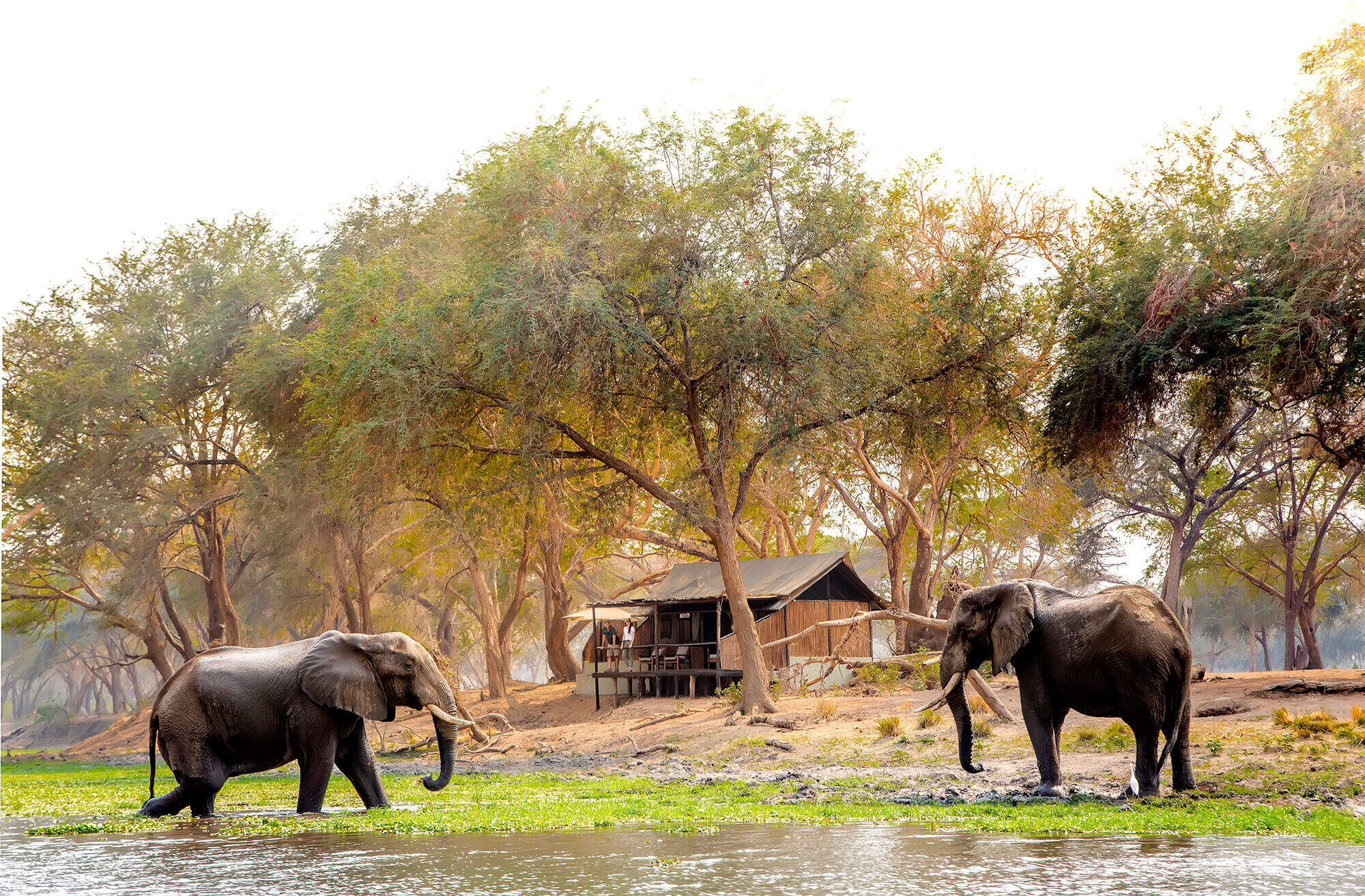
Old Mondoro Bushcamp
For an intimate safari in the Lower Zambezi, with superb guiding, Old Mondoro is up there with the best.
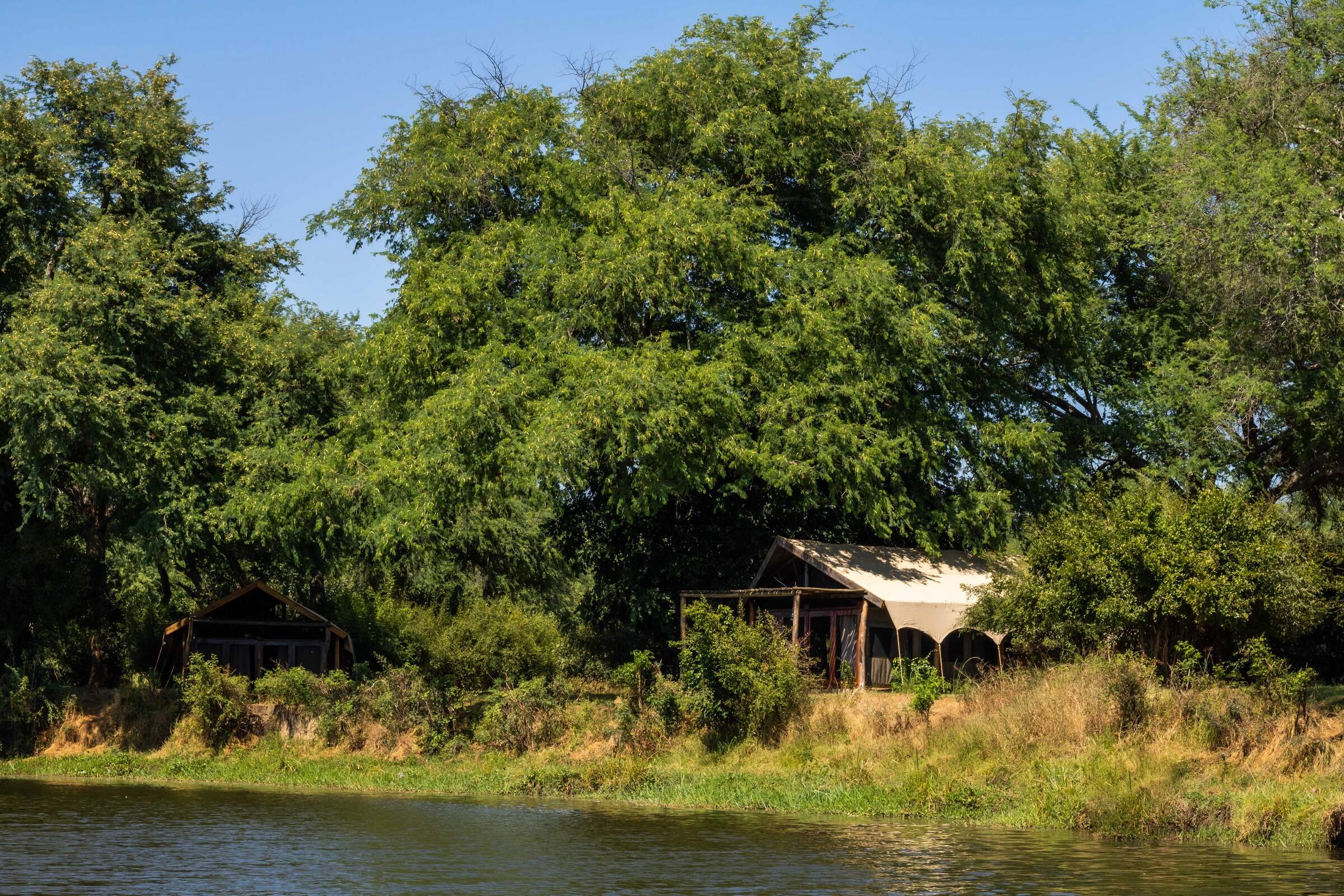
Chongwe River Camp
A blend of the stylish and traditional in a most picturesque site in the Zambezi Valley, Chongwe River Camp offers an excellent safari experience and real value for money.
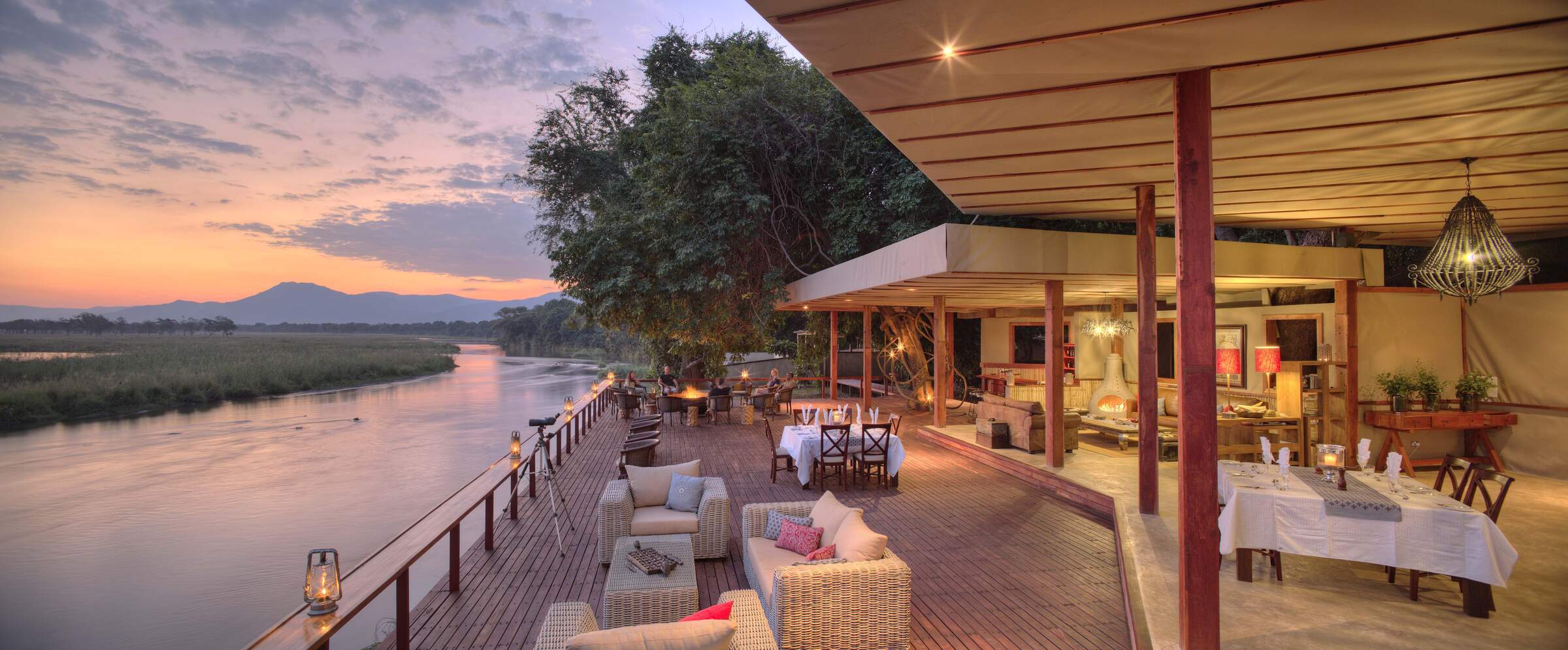
Sausage Tree Camp
Sausage Tree is a high-quality safari camp offering a luxurious stay and excellent personal service deep inside Zambia's Lower Zambezi National Park.
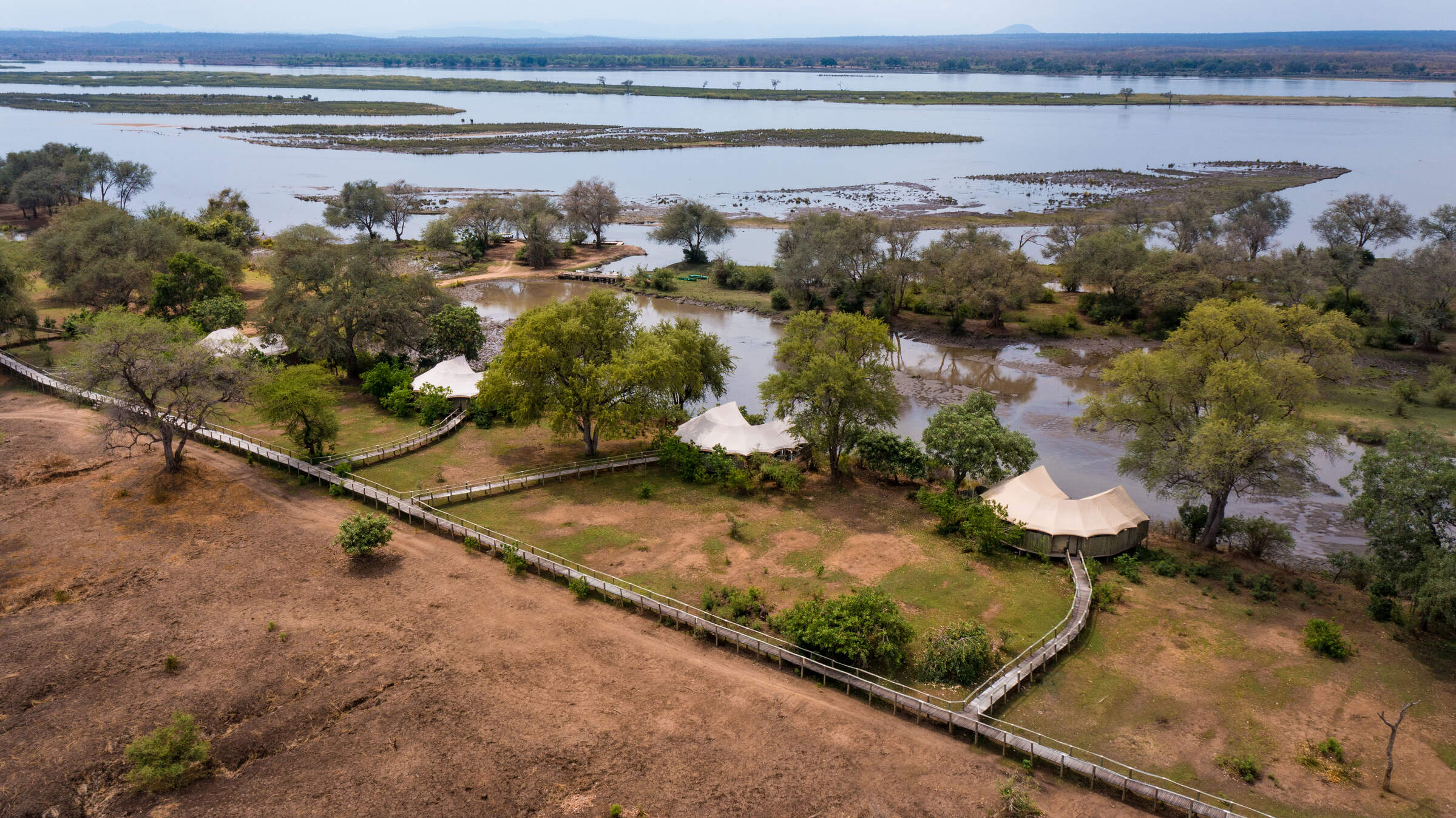
Anabezi Luxury Camp
Anabezi Luxury Tented Camp offers a high degree of understated luxury in a very lovely, quiet part of the Lower Zambezi with outstanding wildlife.
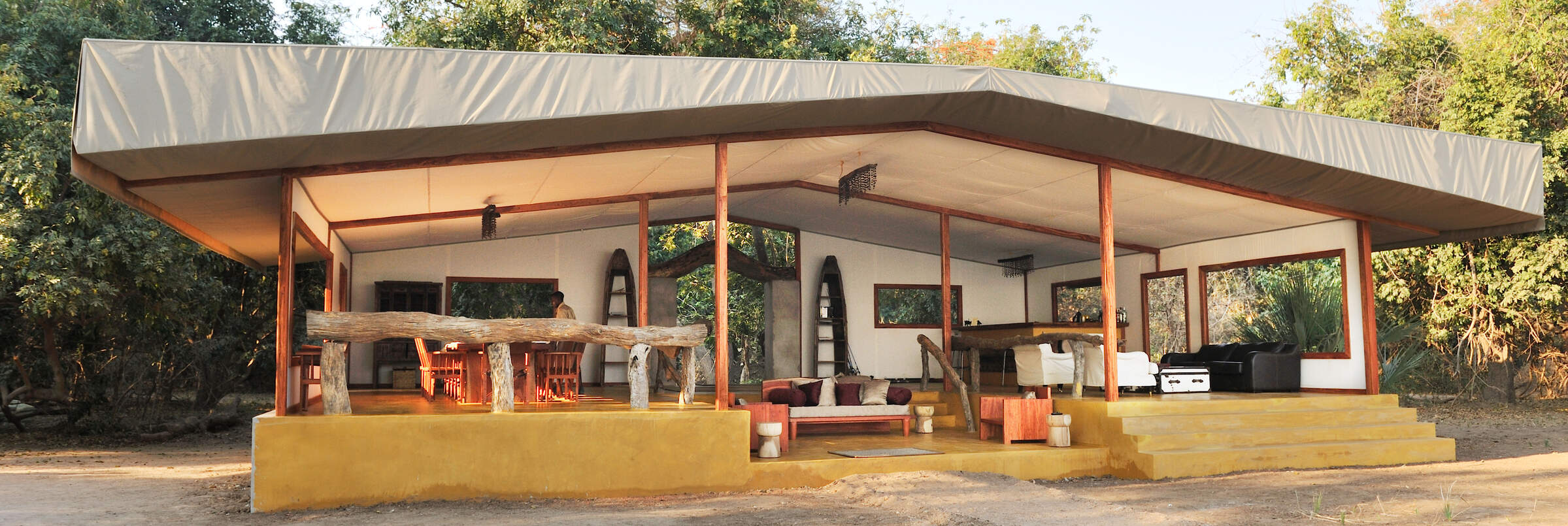
Potato Bush Camp
Potato Bush is located right in the heart of the Lower Zambezi National Park, with privately guided activities taking you on game drives, walks, boat trips and canoeing.
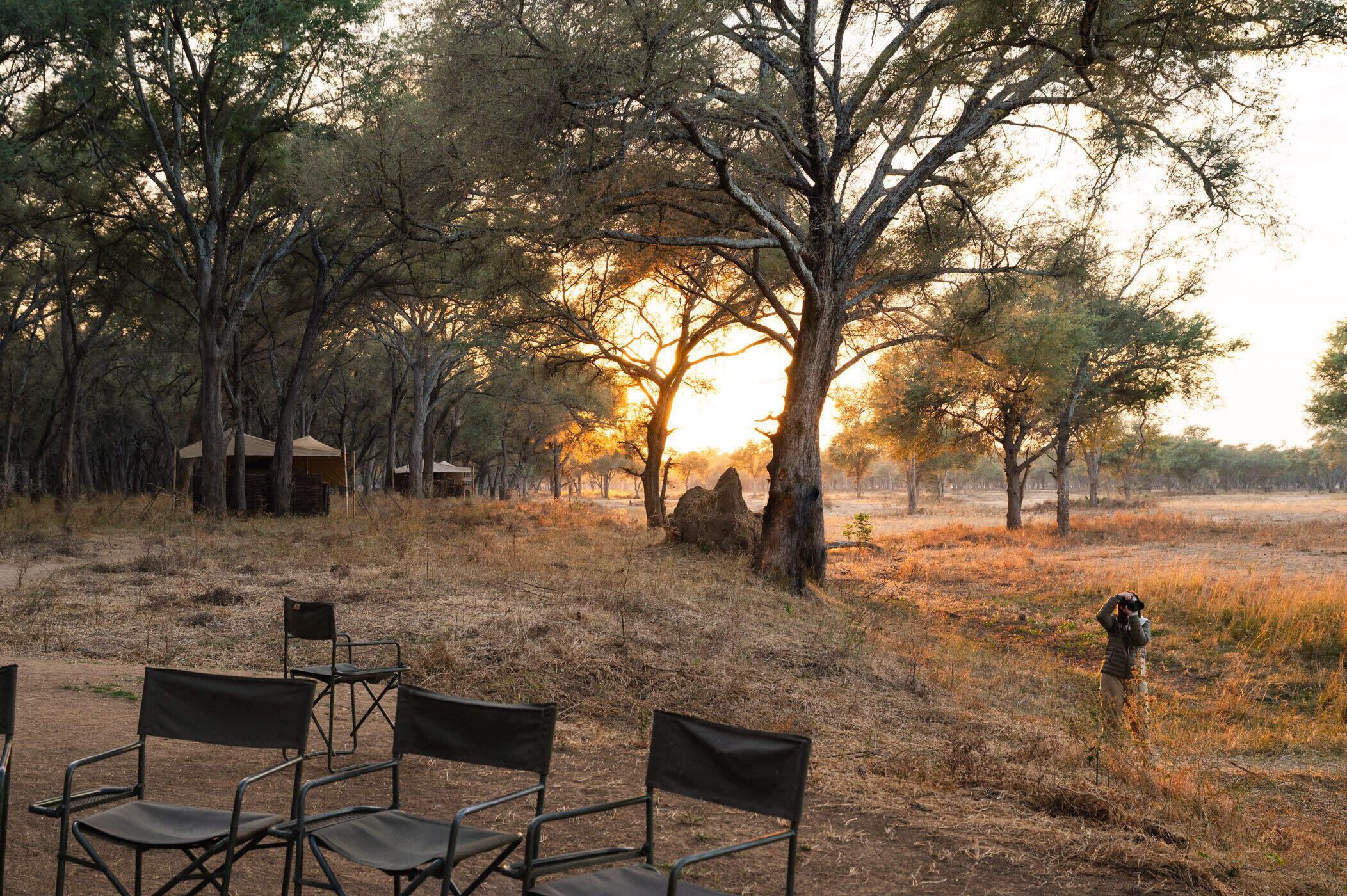
Kutali Camp
Kutali Camp offers the opportunity to experience the wilderness of Zambia’s Lower Zambezi National Park, in this simple tented camp located on Kulefu Island.
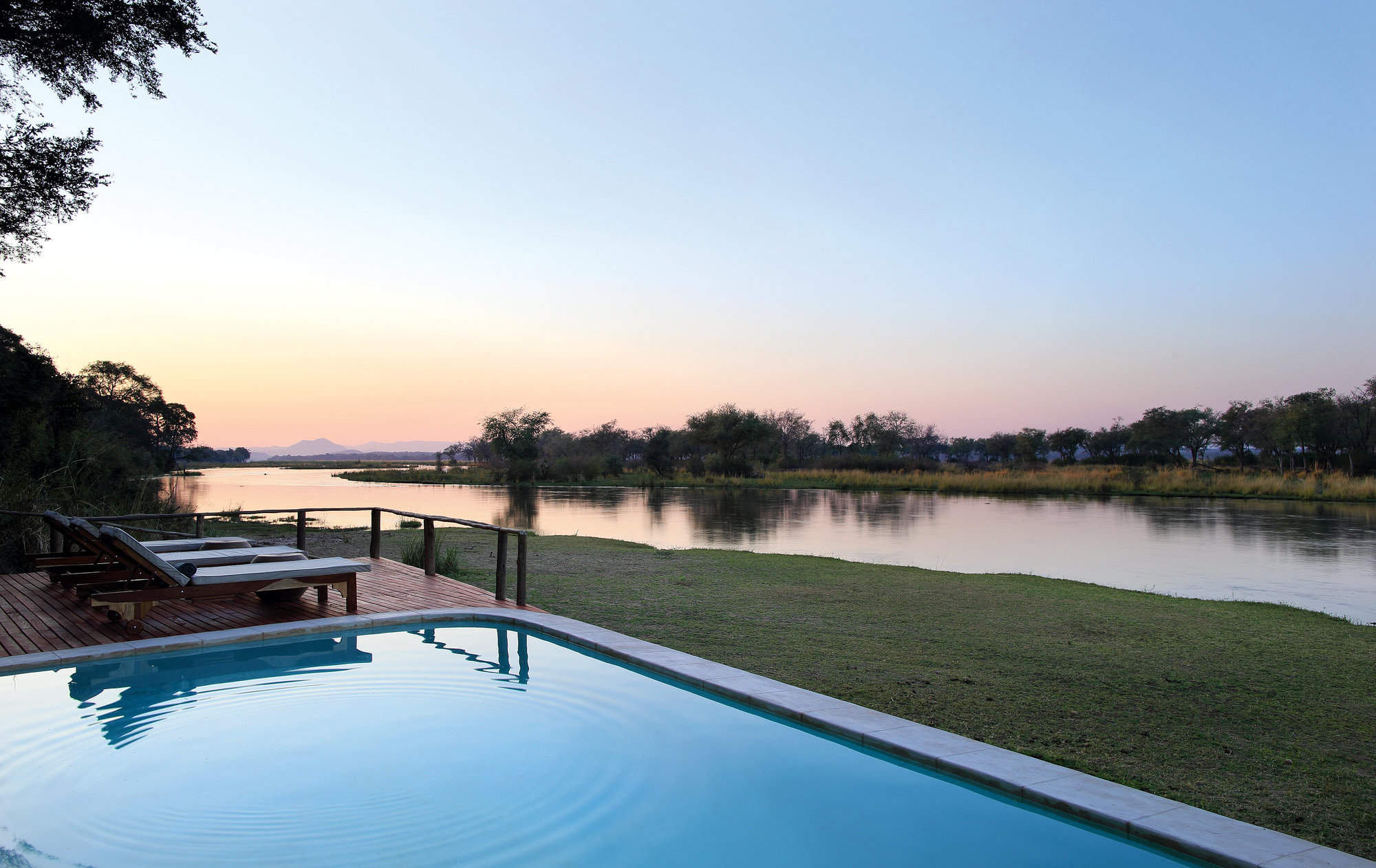
Amanzi
Opened in 2015, Amanzi is an intimate and rustic yet luxury camp in a very quiet area of the Lower Zambezi, with plenty of wildlife and good birding.
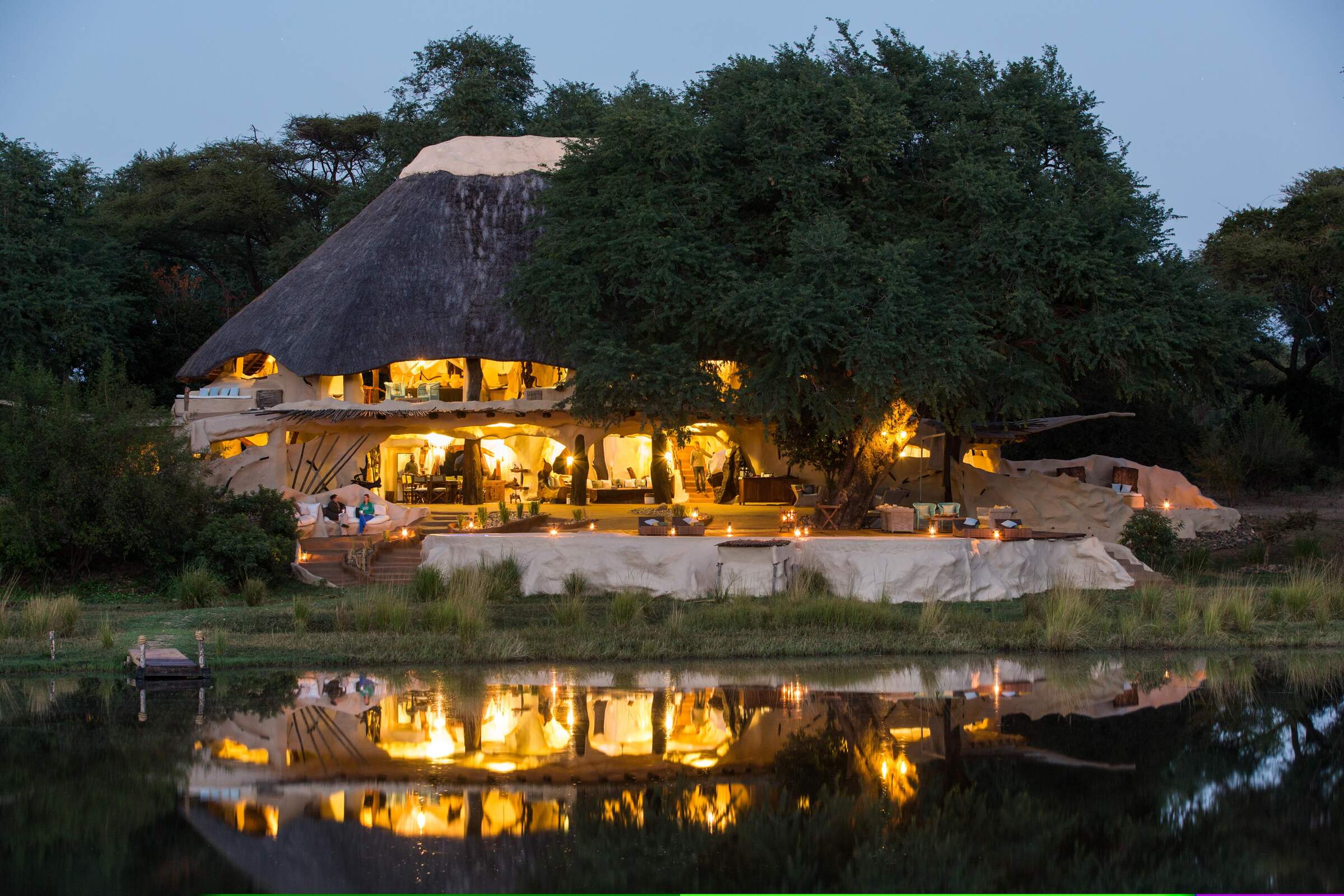
Chongwe River House
Chongwe River House is a stylish four-bedroom house designed for the exclusive use of families and small groups, affording the ultimate in flexibility on safari.
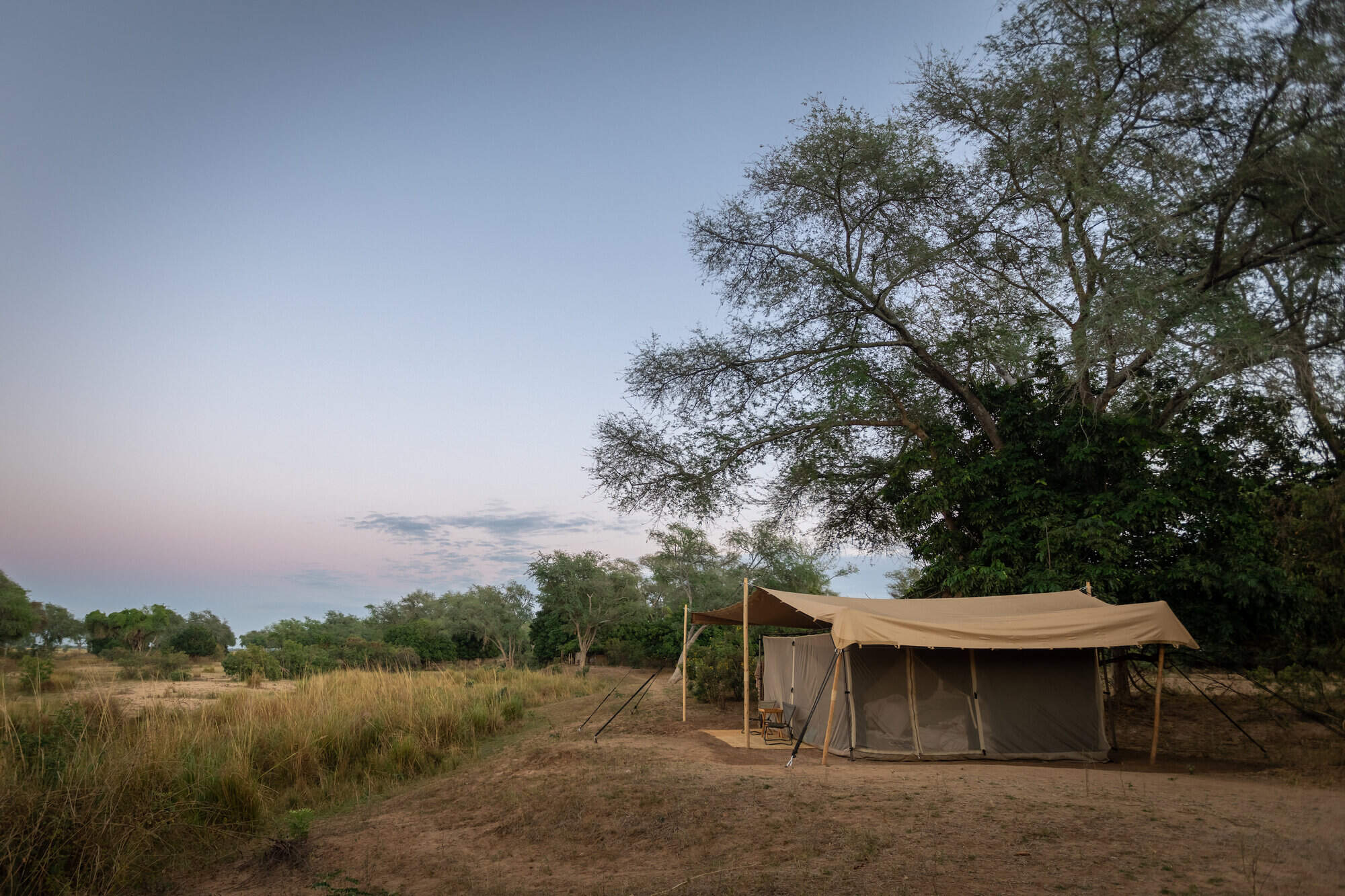
Chula Island Camp
Chula Island Camp offers the opportunity to experience the wilderness of Zambia’s Lower Zambezi National Park, in this simple fly-camp located in a natal mahogany grove on a small island on the Zambezi River.
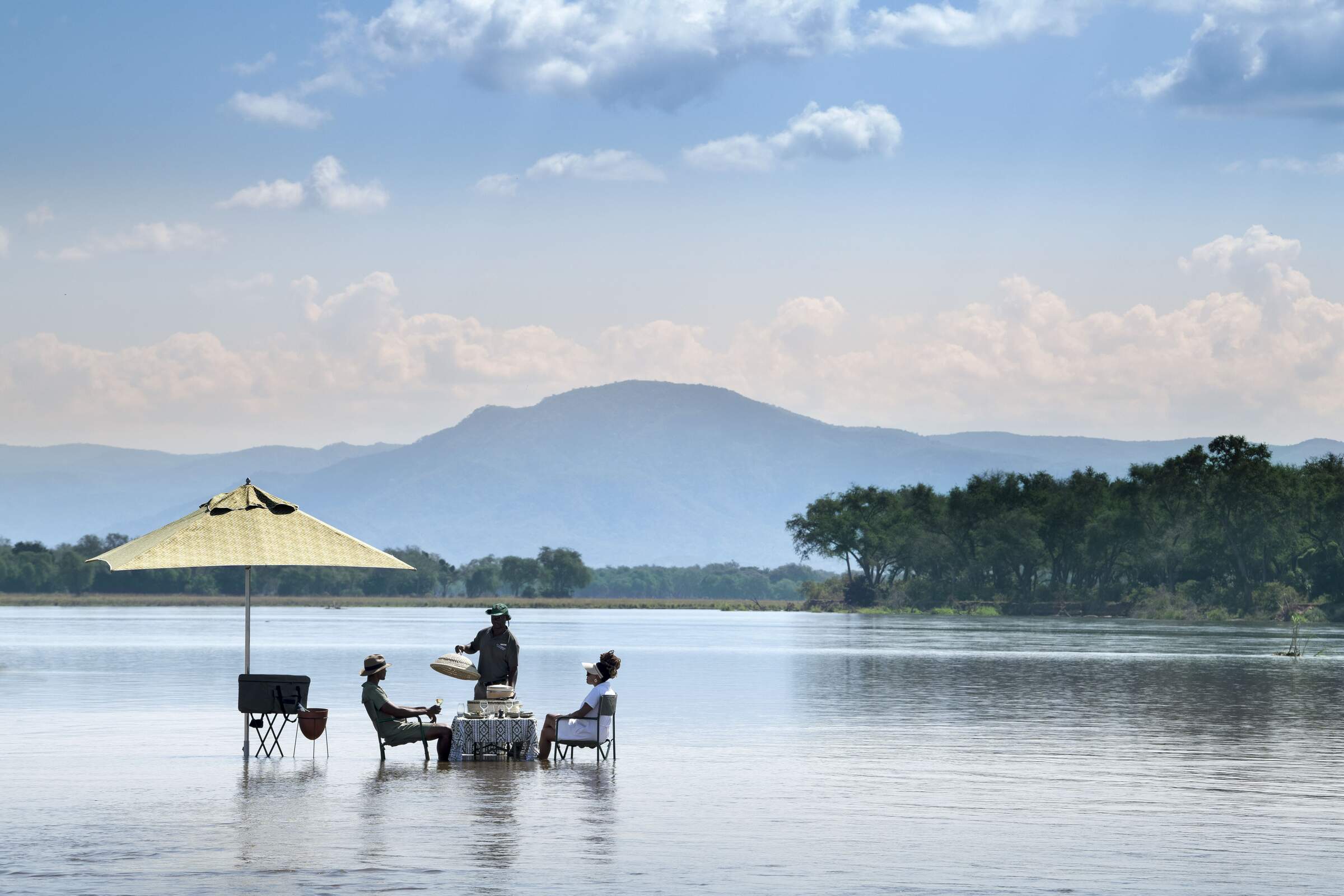
Lolebezi
A chic safari spot, luxurious Lolelbezi is the Lower Zambezi’s newest camp and offers a mix of walking, canoeing and game drives led by excellent guides.
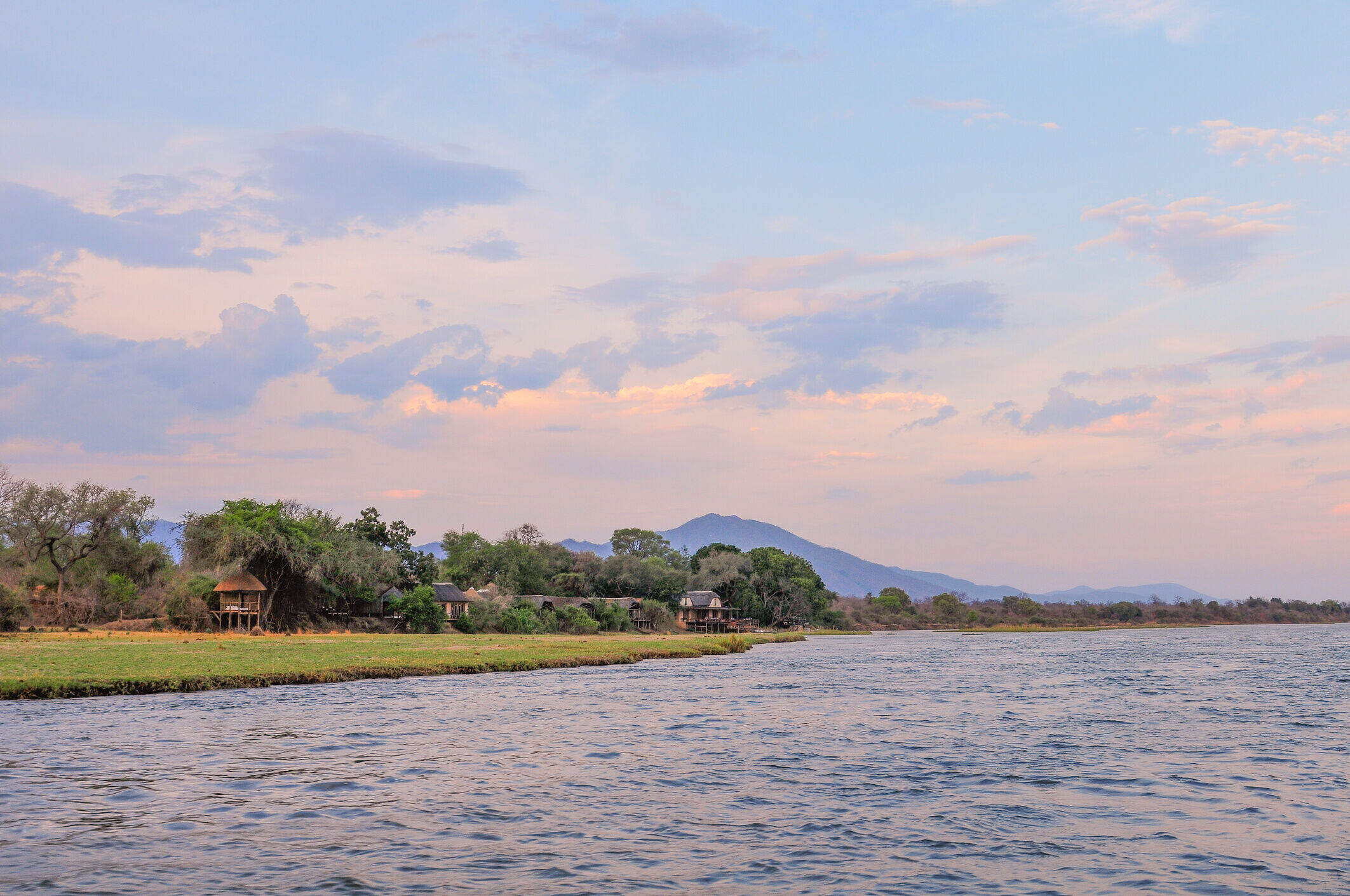
Royal Zambezi Lodge
This family-friendly lodge is located just on the outskirts of the Lower Zambezi National Park, in a great location overlooking the river.
When to go to Lower Zambezi National Park
Our month by month guide: What it's like to visit Chiawa Camp in Lower Zambezi National Park
Jan
Feb
Mar
Apr
May
Jun
Jul
Aug
Sep
Oct
Nov
Dec
Lower Zambezi National Park in January
At the peak of Lower Zambezi's green season, expect heavy rainfall for a few hours on many days with sunny spells in between. Temperatures remain high, reaching over 30°C/86°F with high humidity. The landscape is lush and green, but wildlife disperses, making game viewing challenging. The thick vegetation limits walking safaris. However, this is an excellent time for birdwatching as migrant species boost the park's bird count.
Many camps close during this period, but those remaining open offer their lowest rates. The Zambezi River swells, creating spectacular scenes along its banks. Boat safaris can be particularly rewarding, offering chances to spot hippos, crocodiles, and various waterbirds. Despite the challenges, the park's beauty during this wet season is undeniable, with vibrant colours and dramatic skies.
- Peak of rainy season, hot and humid
- Most camps closed, limited accessibility
- Lush green landscape, great for photography
- Dispersed wildlife, challenging game viewing
- Lowest visitor numbers, cheapest rates
Our view
This is not a great time to visit
Weather in January
Lower Zambezi National Park in February
February remains in the heart of the green season in Lower Zambezi National Park. Dramatic thunderstorms deliver a few hours of rain most days, interspersed with clear sunny skies.
The abundance of water disperses game, making wildlife viewing more challenging. However, the swollen Zambezi River allows for unique boat safaris, offering close encounters with hippos and crocodiles. Birdwatching is excellent, with many migratory species present. The lush vegetation creates a picturesque backdrop for photography.
While game drives may be less productive, canoeing trips can be particularly rewarding, allowing quiet approaches to wildlife along the riverbanks. The few camps that remain open charge their lowest rates, providing an opportunity for budget-conscious travellers to experience the park's wet season beauty.
- Continued rainy season, hot and humid
- Many camps still closed, limited options
- Green landscape, photographic opportunities
- Difficult game viewing due to thick vegetation
- Low visitor numbers, affordable rates
Our view
This is not a great time to visit
Weather in February
Lower Zambezi National Park in March
March marks the last month of the green season in the Lower Zambezi. Heavy downpours still occur most days, with water levels at their highest. Temperatures reach over 30°C/86°F, with high humidity.
While many camps remain closed, those few remaining open offer unique wet season experiences. Boat safaris are particularly exciting, with the swollen Zambezi River providing extended exploration areas. Wildlife sightings may be sporadic, but many animals are raising young, offering heartwarming scenes.
Predators like lions and wild dogs are active, taking advantage of vulnerable prey. The lush, green landscape and clear air create stunning photographic opportunities. Birdwatching remains excellent as thousands of birds prepare for their winter migration. Despite challenges, March offers a different perspective of the park's ecosystem.
- Late rainy season, occasional showers
- A few camps begin to reopen
- Landscape still green, good for photography
- Improved wildlife viewing as vegetation thins
- Few visitors; rates for camps low
Our view
This is not a great time to visit
Weather in March
Lower Zambezi National Park in April
As the rains transition to lighter, sporadic showers, April marks a period of change in Lower Zambezi National Park. The landscape remains exceptionally green and lush. While larger wildlife viewing may be sparse, this is an excellent time for birding enthusiasts.
The Zambezi River is at its highest, creating spectacular scenes along its banks. Boat safaris offer unique perspectives of the flooded landscape. As camps slowly start to reopen, visitors can enjoy lower off-season rates. The park's famous canoe safaris become increasingly viable as water levels stabilise.
Night game drives can be particularly rewarding, offering chances to spot nocturnal animals like civets and genets. April's transitional nature provides a blend of wet and dry season experiences.
- End of rainy season, drier conditions
- More camps open, better accessibility
- Landscape transitioning, good for photos
- Improved game viewing, animals more visible
- Visitor numbers rise, rates remain low
Our view
This is not a great time to visit
Weather in April
Lower Zambezi National Park in May
May typically marks the start of the dry season in the Lower Zambezi. While there's a chance of an odd shower, most days are clear and sunny. As winter approaches, daytime temperatures reach highs of around 26°C/79°F. The landscape begins to dry out, improving access throughout the park.
Most camps reopen, offering a wider range of accommodation options. Game viewing improves significantly as animals start to congregate around permanent water sources. Boat safaris on the Zambezi River become increasingly popular, offering close encounters with hippos, crocodiles, and various bird species.
Walking safaris resume, providing intimate wildlife experiences. May's pleasant weather and improved game viewing make it an excellent time to visit, with some camps still offering shoulder season rates.
- Start of dry season, cooler temperatures
- Most camps open, full range of activities
- Landscape drying, clearer wildlife sightings
- Excellent time for walking safaris
- Visitor numbers increase, rates go up
Our view
A good time to visit, with pros & cons
Weather in May
Lower Zambezi National Park in June
The Lower Zambezi sees virtually no rainfall in June, with sunny days predominating. Humidity drops dramatically, and temperatures range from 10°C/50°F at night to 25°C/77°F during the day. The landscape remains relatively lush, but vegetation starts to thin, significantly improving game viewing.
All camps in the park are open, some offering shoulder-season rates. The Zambezi River's water levels begin to recede, concentrating wildlife along its banks. This is an excellent time for canoe safaris, offering unique perspectives of the park's ecosystem.
Game drives become increasingly productive, with higher chances of spotting predators like lions and leopards. June's pleasant temperatures and improved wildlife sightings make it a popular month for visitors.
- Dry season, cool days and cold nights
- All camps open, peak activity options
- Improved wildlife viewing around water sources
- Prime time for walking safaris and game drives
- High season begins, increased rates
Our view
A very good time to visit
Weather in June
Lower Zambezi National Park in July
As the dry season continues in Lower Zambezi National Park, vegetation thins and water becomes scarcer. Wildlife is starting to cluster around major water sources, particularly the Zambezi River, leading to excellent game viewing opportunities.
July marks the heart of winter, with daytime temperatures in the 20s Celsius / 70s Fahrenheit but dropping to single digits at night. Early morning and late evening game drives can be very chilly, with camps often providing blankets and hot water bottles.
This is prime time for walking safaris, offering exciting wildlife encounters. Canoe trips on the Zambezi River are particularly rewarding, with high chances of spotting elephants coming to drink. Visitor numbers increase, and properties charge peak season rates.
- Peak dry season, clear skies
- Excellent game viewing, especially near river
- Popular time for canoe and boat safaris
- Night drives offer nocturnal wildlife sightings
- Peak season, highest rates and visitor numbers
Our view
A very good time to visit
Weather in July
Lower Zambezi National Park in August
August in the Lower Zambezi offers excellent game viewing as wildlife congregates around remaining water sources. With virtually no chance of rain, sunny days are almost guaranteed. Temperatures can drop below 5°C/41°F at night but climb to the 20s Celsius / 70s Fahrenheit during the day.
The thinned vegetation provides clear views of animals, making this one of the best months for photography. Boat safaris on the Zambezi River offer close encounters with hippos, crocodiles, and elephants. Tiger fishing is at its peak, attracting anglers from around the world.
Walking safaris provide thrilling up-close wildlife experiences. This is one of the most popular months to visit, with camps charging their highest rates and often fully booked well in advance.
- Very dry, animals concentrate near water
- Outstanding wildlife viewing opportunities
- Ideal for photography and walking safaris
- Zambezi River cruises highly recommended
- Peak season continues, advance booking needed
Our view
Fantastic: the very best time to visit
Weather in August
Lower Zambezi National Park in September
September is one of the best times to visit Lower Zambezi National Park for wildlife enthusiasts. Rain is almost unheard of, humidity is low, and daytime temperatures climb to the low 30s Celsius / high 80s Fahrenheit.
Water is scarce, concentrating wildlife around the Zambezi River and remaining water holes. Game viewing is at its peak, with high chances of seeing predator-prey interactions. Elephant herds are frequently spotted crossing the river.
Canoe safaris offer thrilling close encounters with wildlife. Night game drives provide opportunities to spot nocturnal animals like leopards and genets. Birdwatching remains excellent, with many species nesting. However, this popularity comes at a price: camps charge their highest rates and are often fully booked far in advance.
- Hot days, warm nights, very dry
- Excellent month for wildlife viewing
- Zambezi River at its lowest, great for canoeing
- Increased elephant sightings near water
- High season, camps can be fully booked
Our view
Fantastic: the very best time to visit
Weather in September
Lower Zambezi National Park in October
October marks the peak of the dry season in the Lower Zambezi. Away from the Zambezi, the national park is brown and barren, with little ground-level vegetation. Temperatures can be uncomfortably hot, often exceeding 40°C/104°F during the day.
Despite the heat, this is considered the best month for game viewing. The scarcity of water forces animals to congregate around the main river, leading to frequent wildlife sightings and predator-prey interactions.
Boat safaris offer relief from the heat and excellent opportunities to observe elephants, hippos, and crocodiles. Walking safaris may be challenging due to the heat but provide thrilling wildlife encounters. October is prime time for spotting large predators like lions and leopards.
- Hottest month, animals congregate at river
- Peak time for wildlife viewing and photography
- Excellent for boat safaris and fishing
- Chance to see elephants crossing the river
- End of high season, some rate reductions
Our view
A very good time to visit
Weather in October
Lower Zambezi National Park in November
November typically marks the end of the dry season in the Lower Zambezi. While the timing of rains is uncertain, temperatures remain high and humidity builds.
Early November may still offer excellent game viewing, with animals concentrated around water sources. As the month progresses, the arrival of rains leads to rapid vegetation growth and wildlife dispersal. This transition period can be fascinating to witness. The initial rains bring relief to the parched landscape, with new growth attracting grazing animals.
Birdwatching improves as migratory species arrive in the valley. While some remote camps close, those that remain open significantly drop their rates. November offers a unique opportunity to experience both dry and wet season aspects of the park.
- Start of rainy season, occasional showers
- Wildlife disperses as water becomes available
- Good birding as migratory species arrive
- Lush landscapes return, photography improves
- Shoulder season, lower rates and fewer visitors
Our view
A good time to visit, with pros & cons
Weather in November
Lower Zambezi National Park in December
December marks the start of the green season in the Lower Zambezi National Park. Heavy thunderstorms occur most days, interspersed with sunny spells. Temperatures reach over 30°C/86°F with high humidity.
The rainfall brings abundant water to the landscape, encouraging lush vegetation growth. While game viewing becomes more challenging due to the thick bush and dispersed wildlife, this is an excellent time for birdwatching. Migratory birds arrive, boosting the species count. Boat safaris on the swollen Zambezi River offer unique perspectives of the flooded landscape.
Many camps close for the season, but those remaining open charge their lowest rates. Despite the challenges, December offers a green and vibrant aspect of the park, with dramatic skies and fewer visitors.
- Rainy season in full swing, hot and humid
- Some camps close, limited accessibility
- Newborn animals, great for bird watching
- Challenging game viewing, but lush scenery
- Low season, cheapest rates, fewer tourists
Our view
This is not a great time to visit
Weather in December

Looking for inspiration on where to travel next?
Visit our trip chooser to explore your options and find inspiration for your perfect African adventure
Inspire me